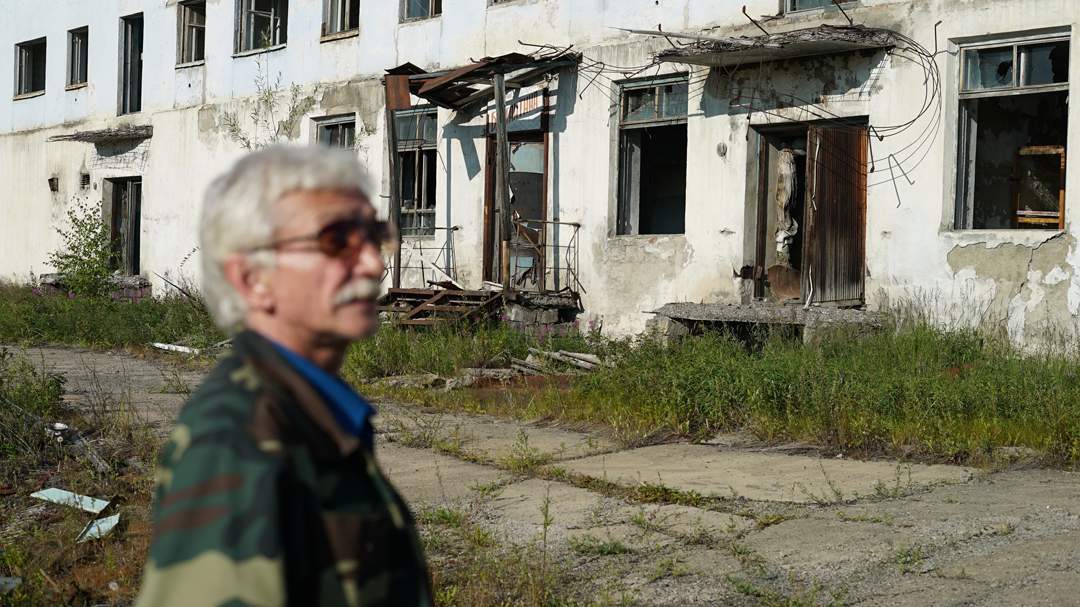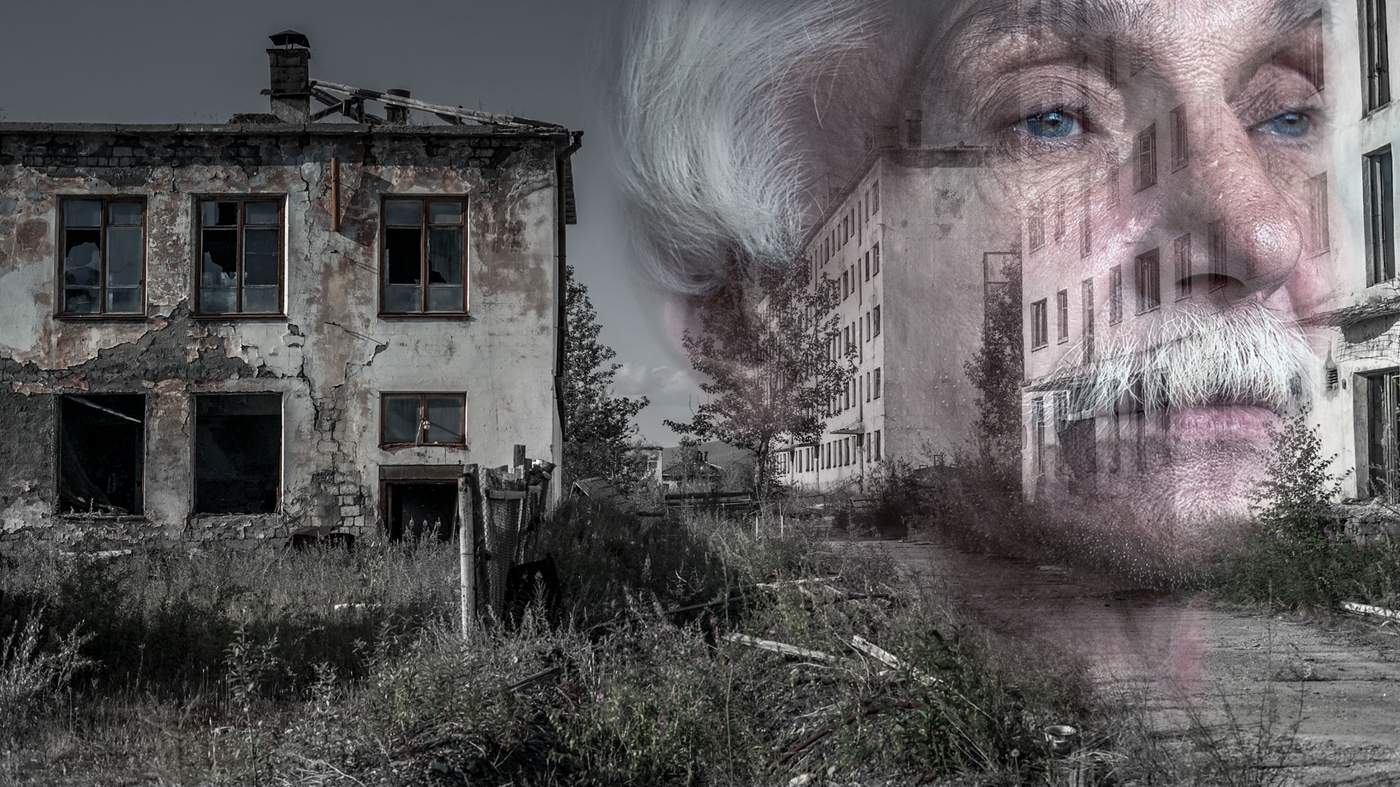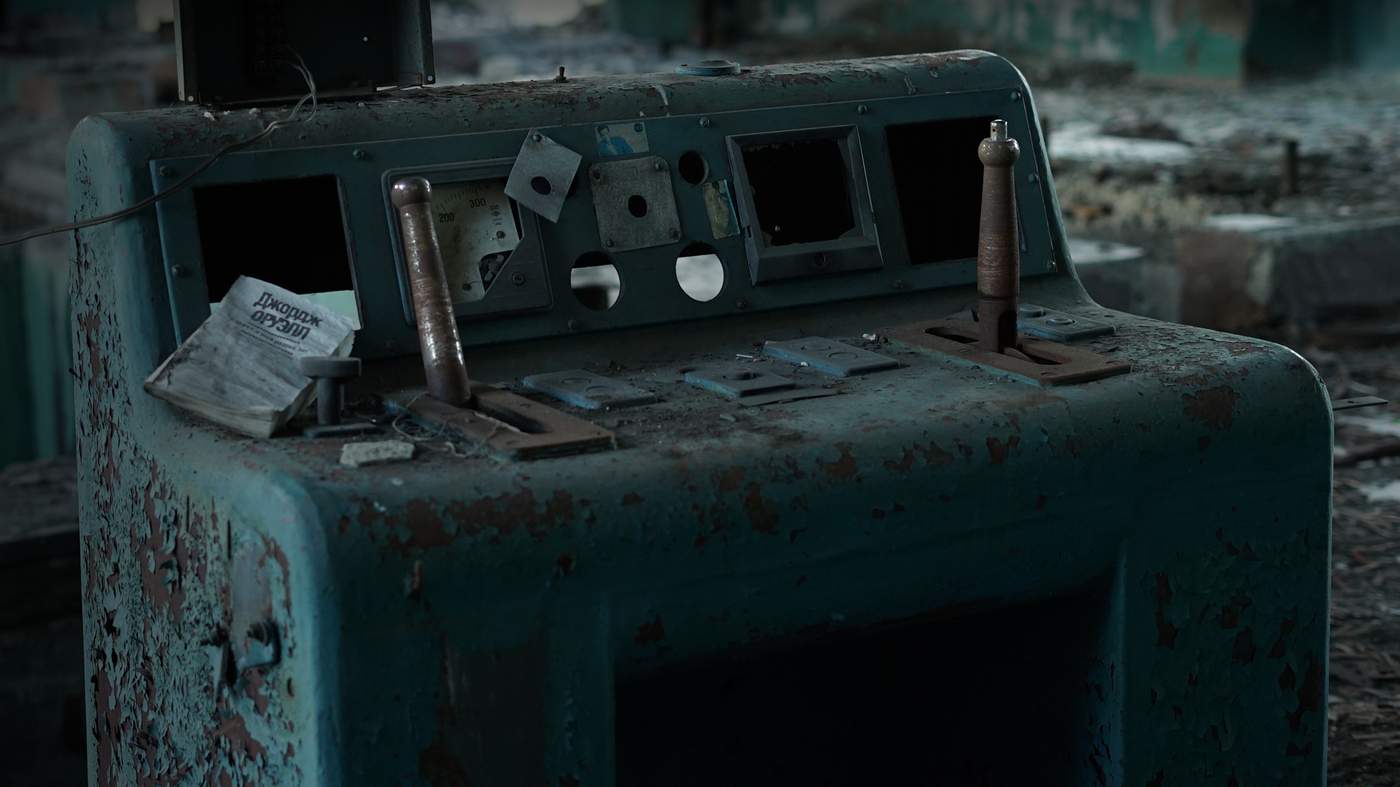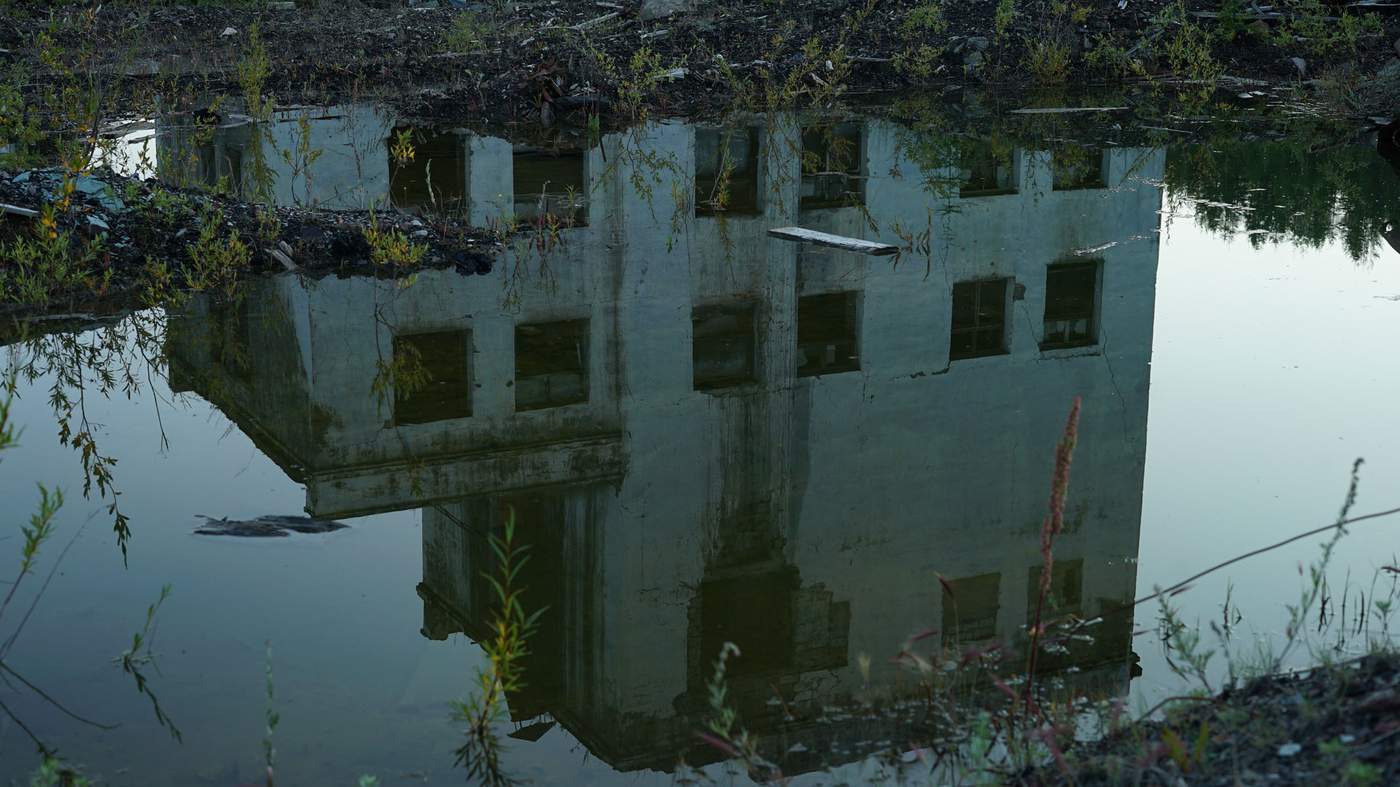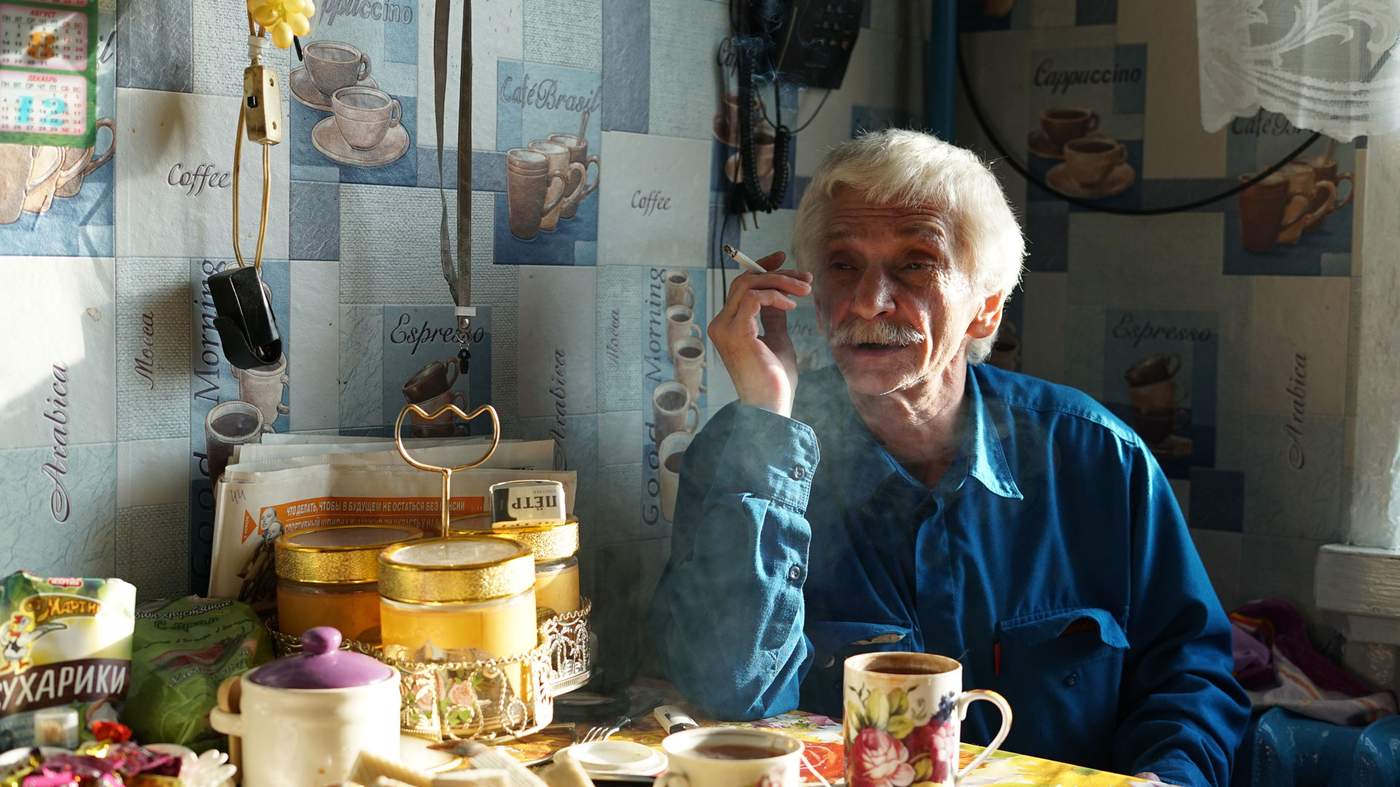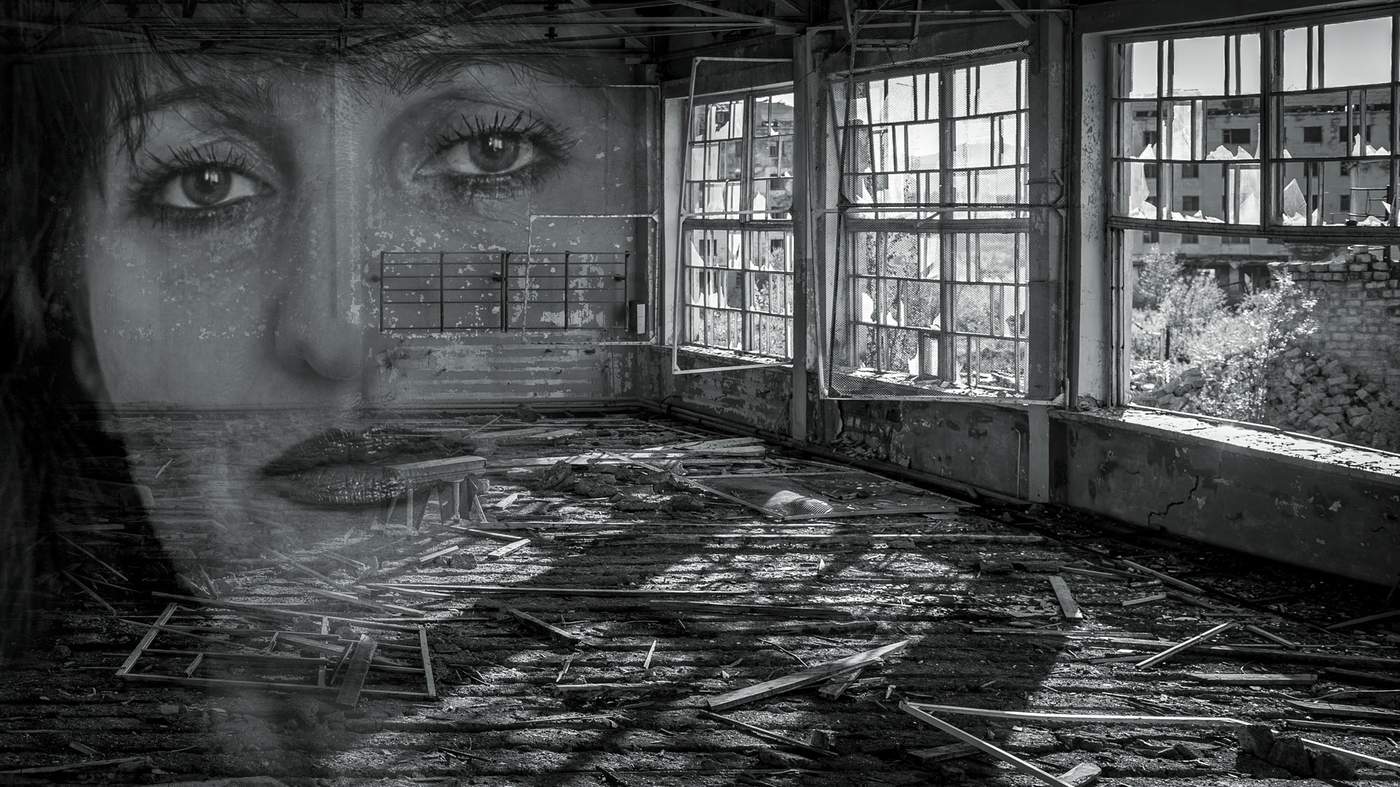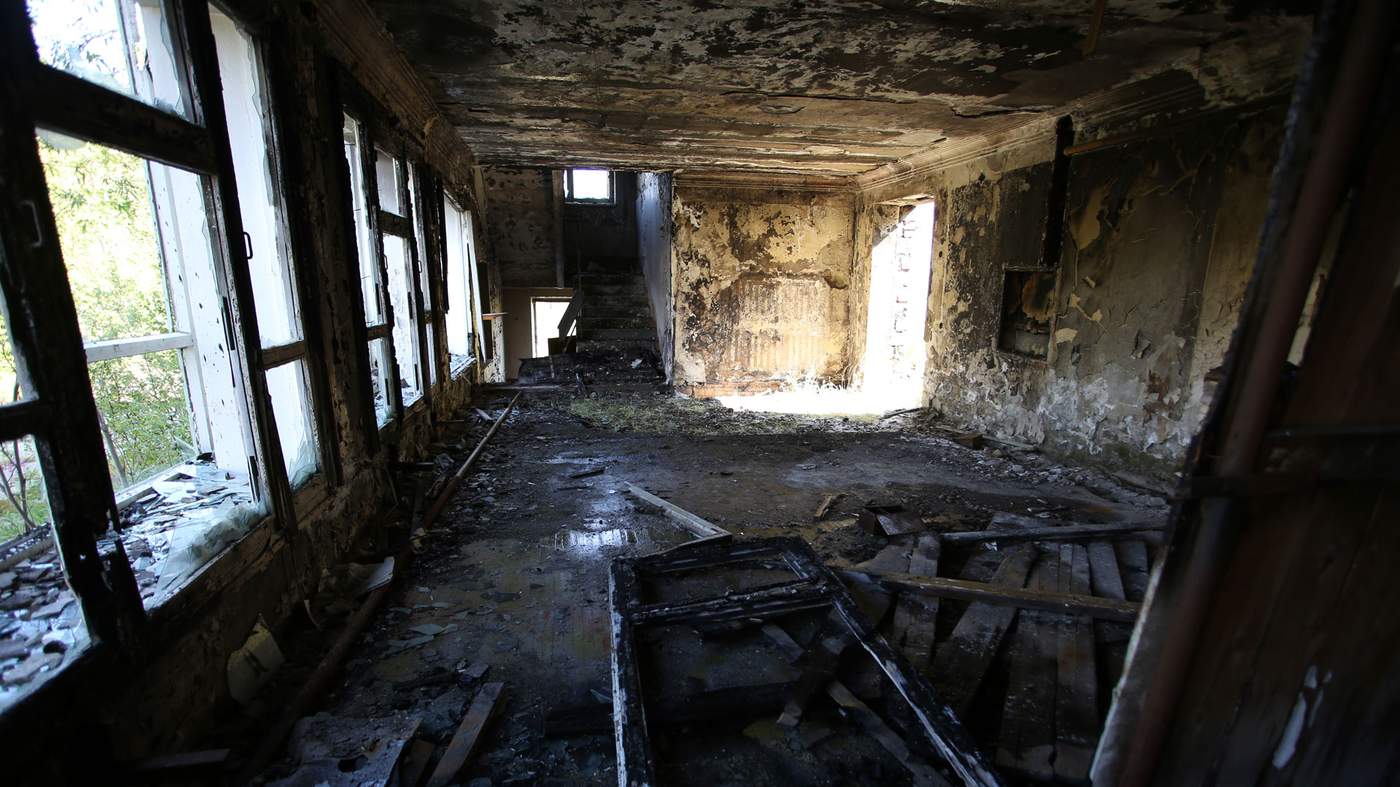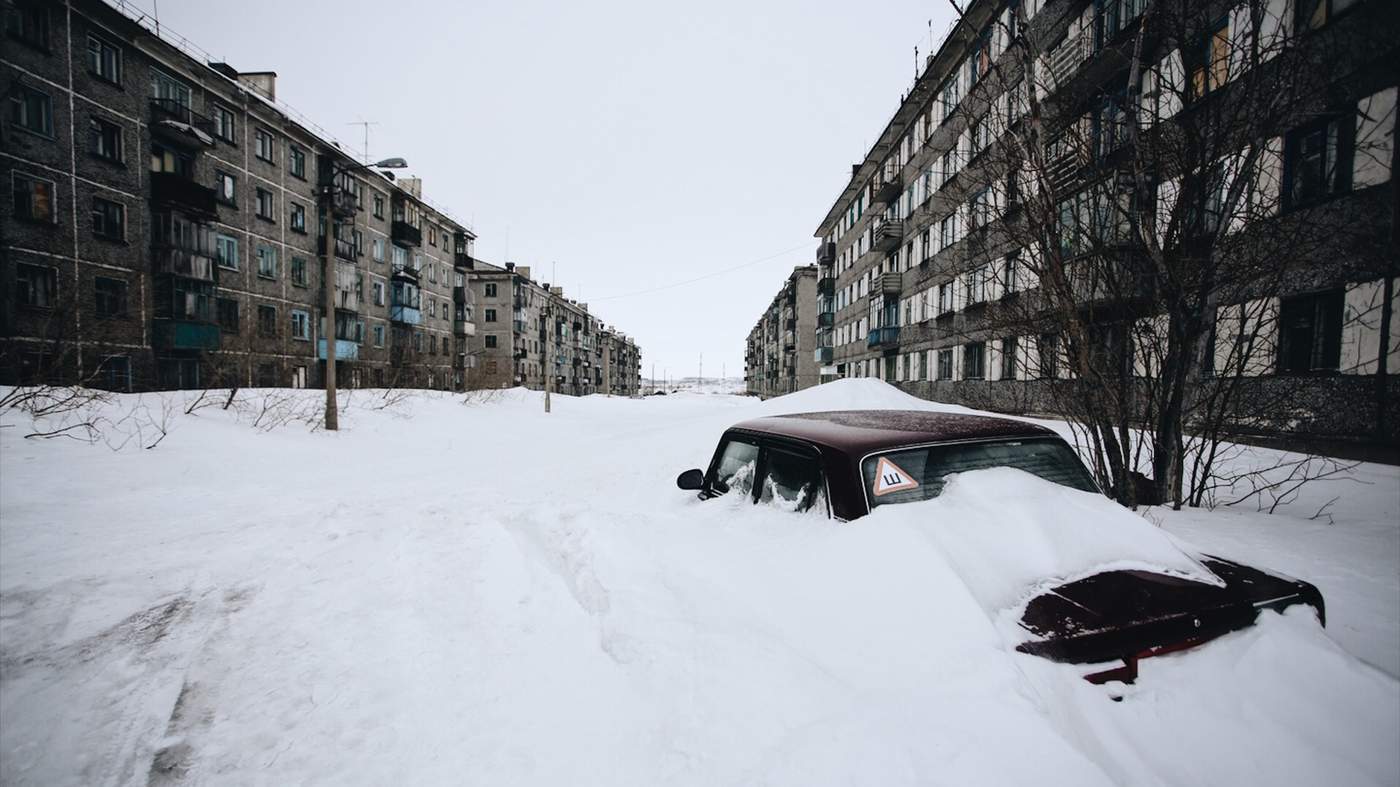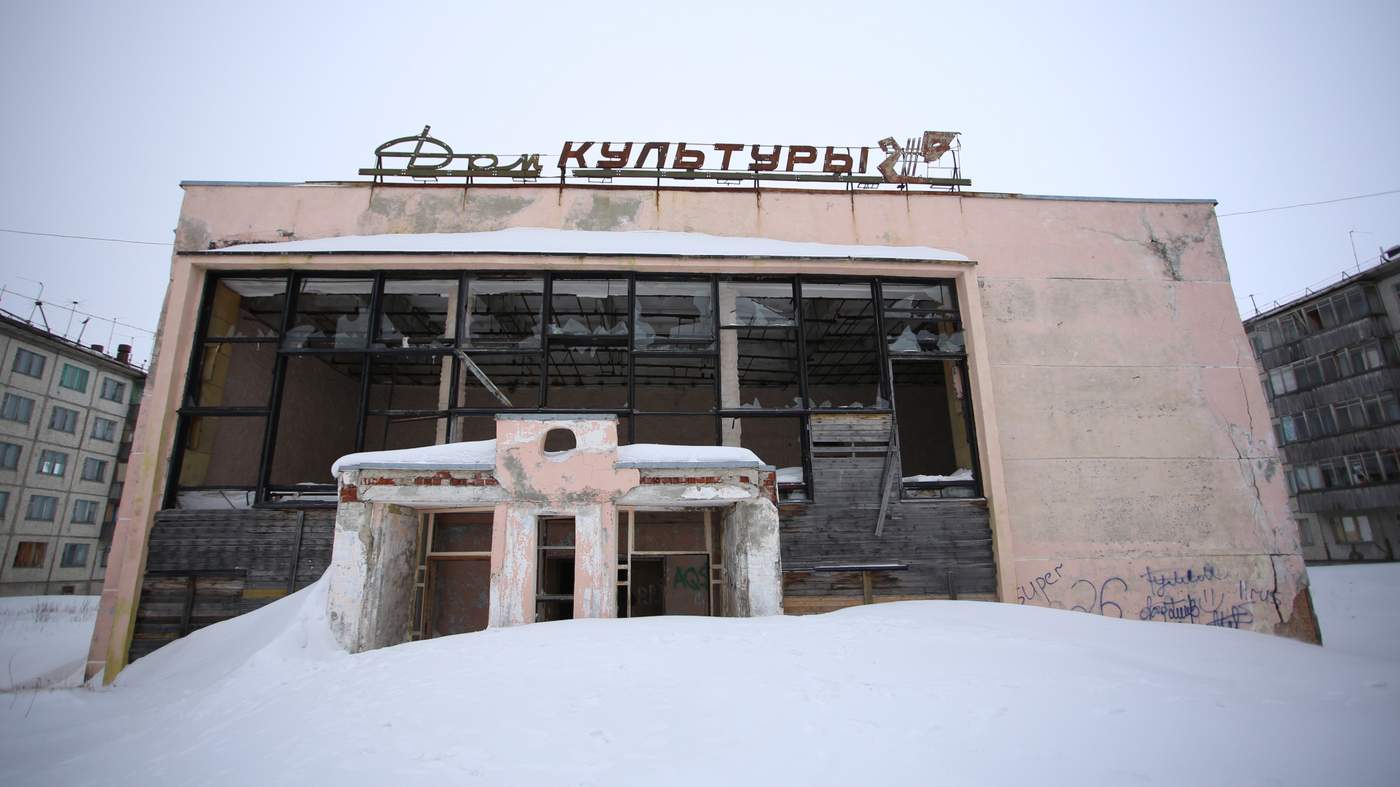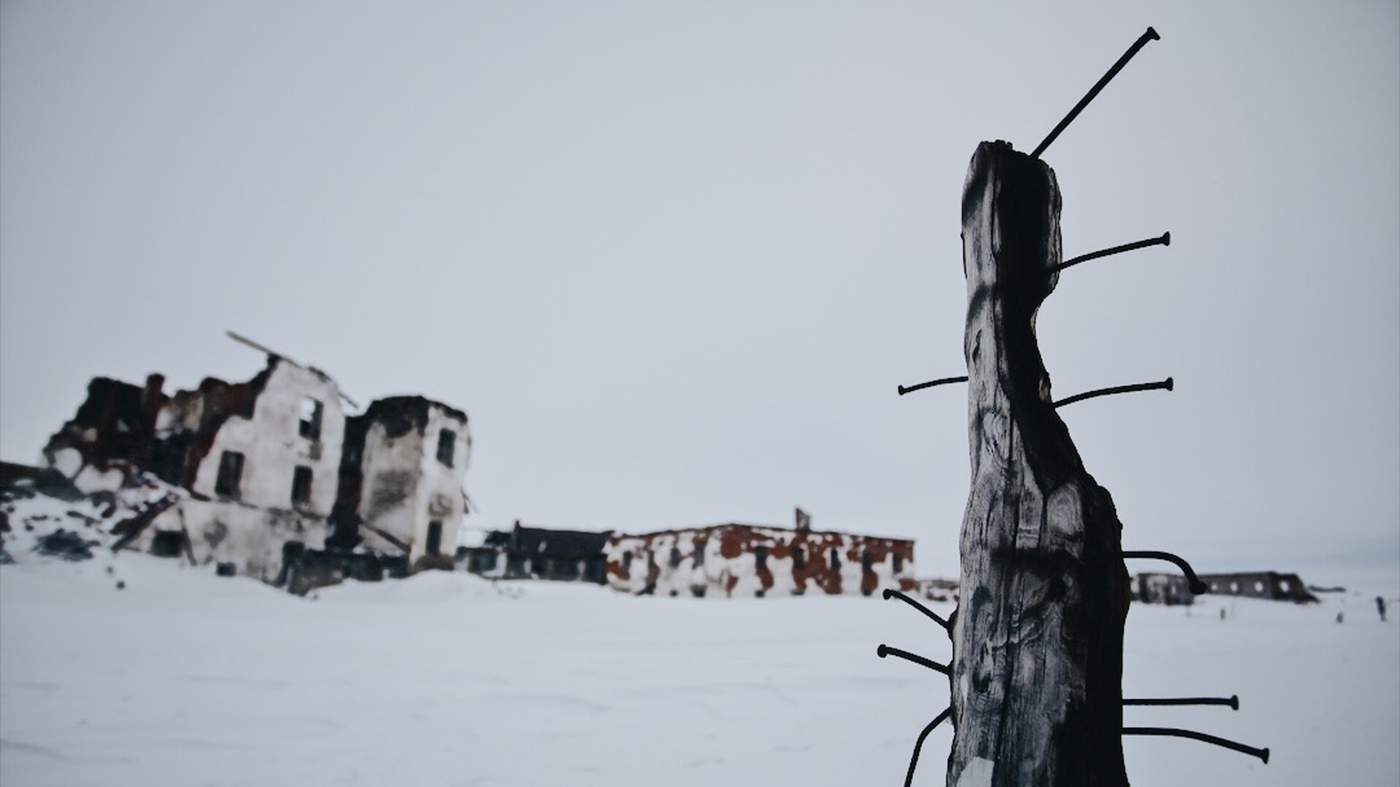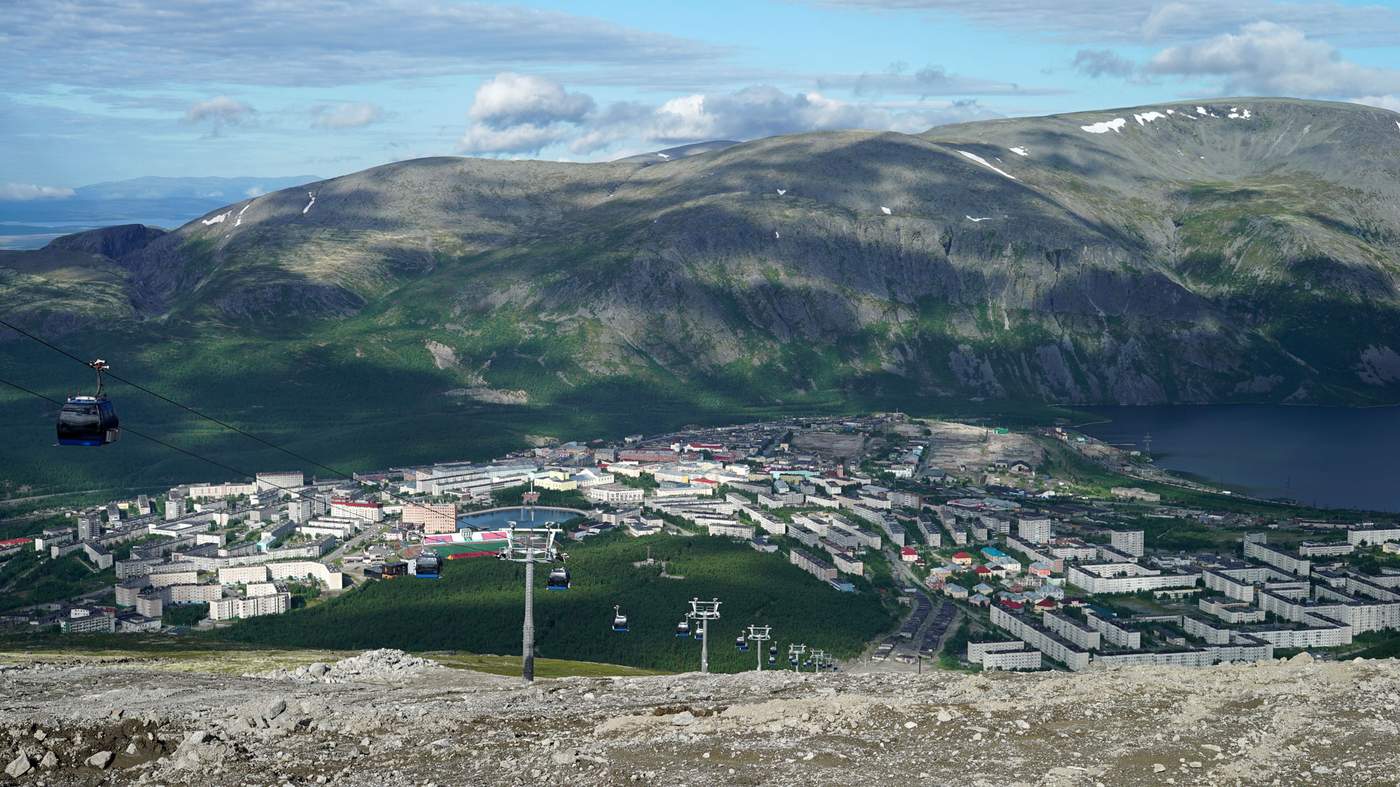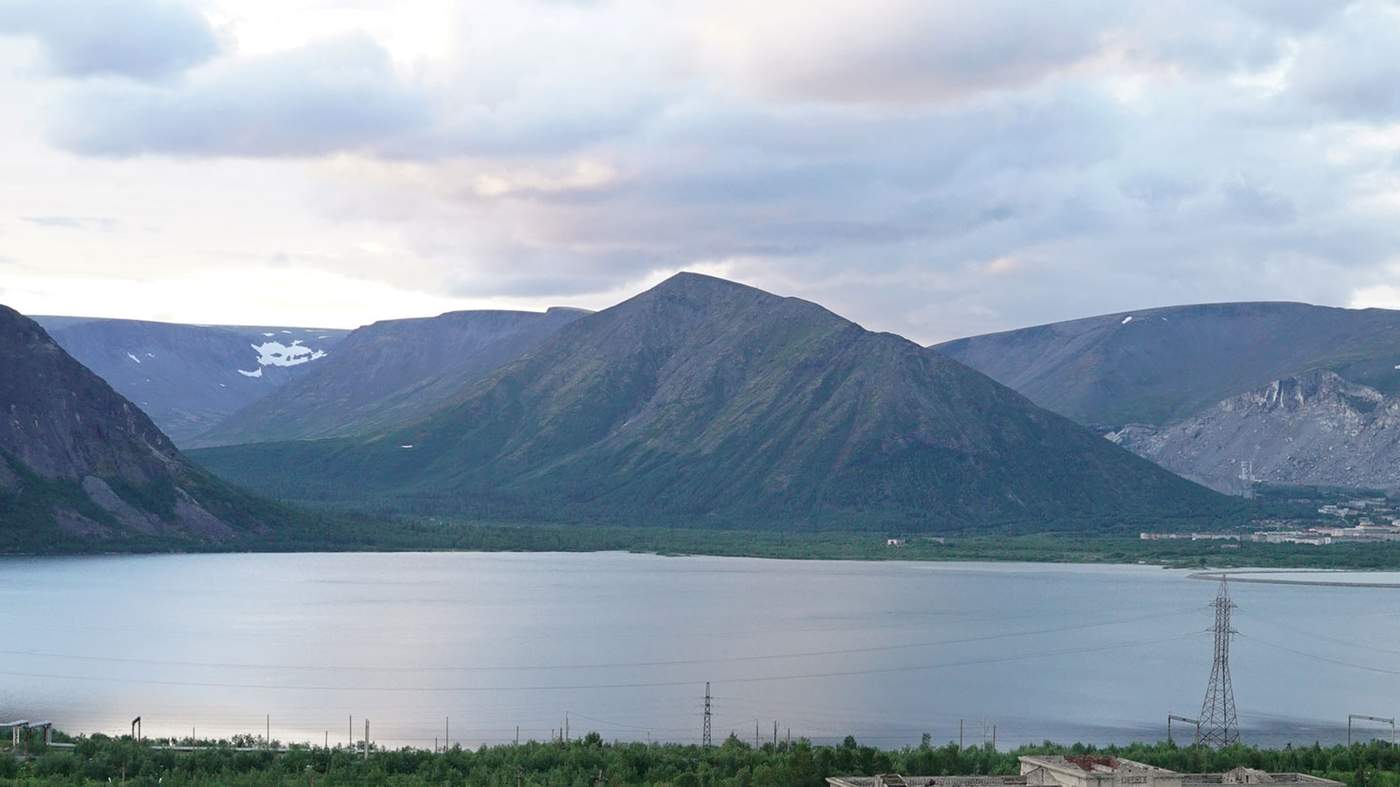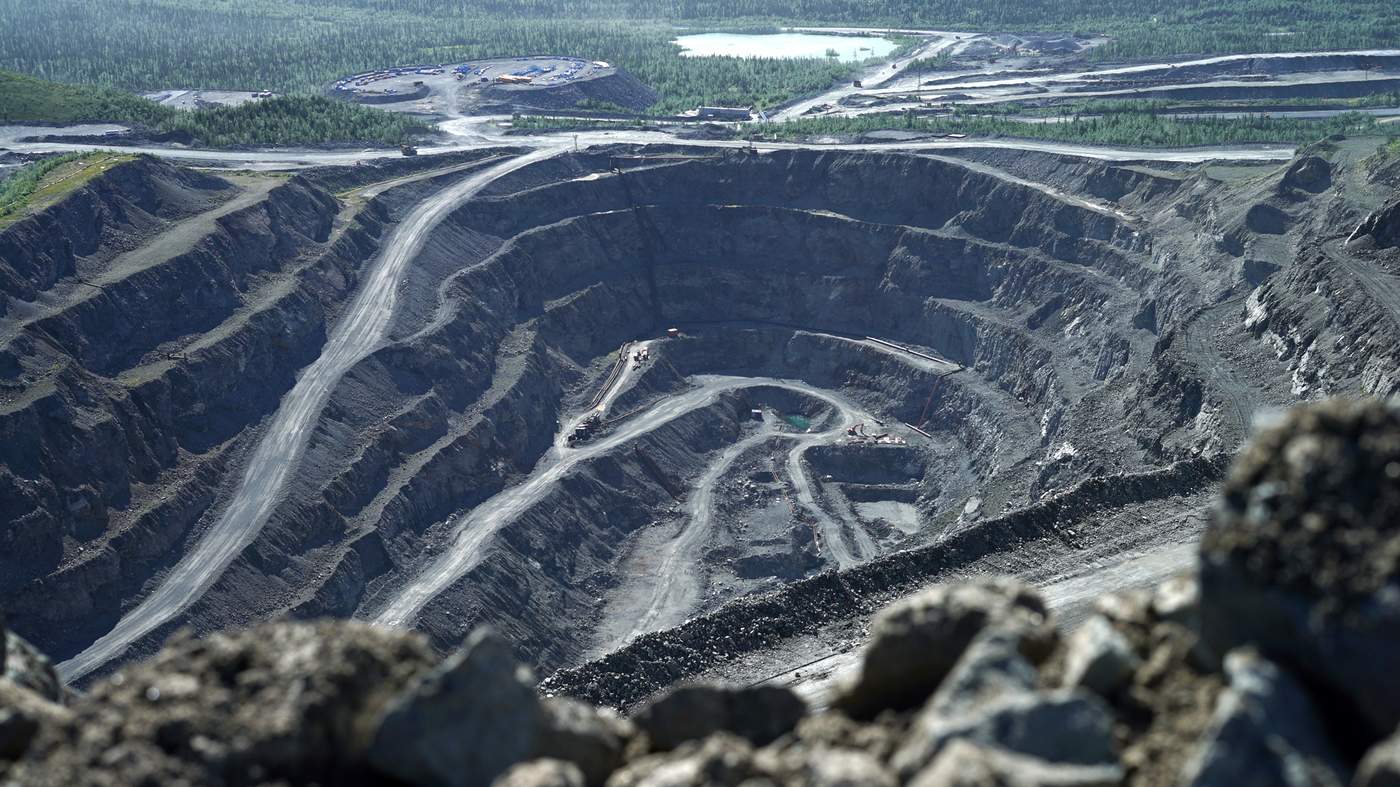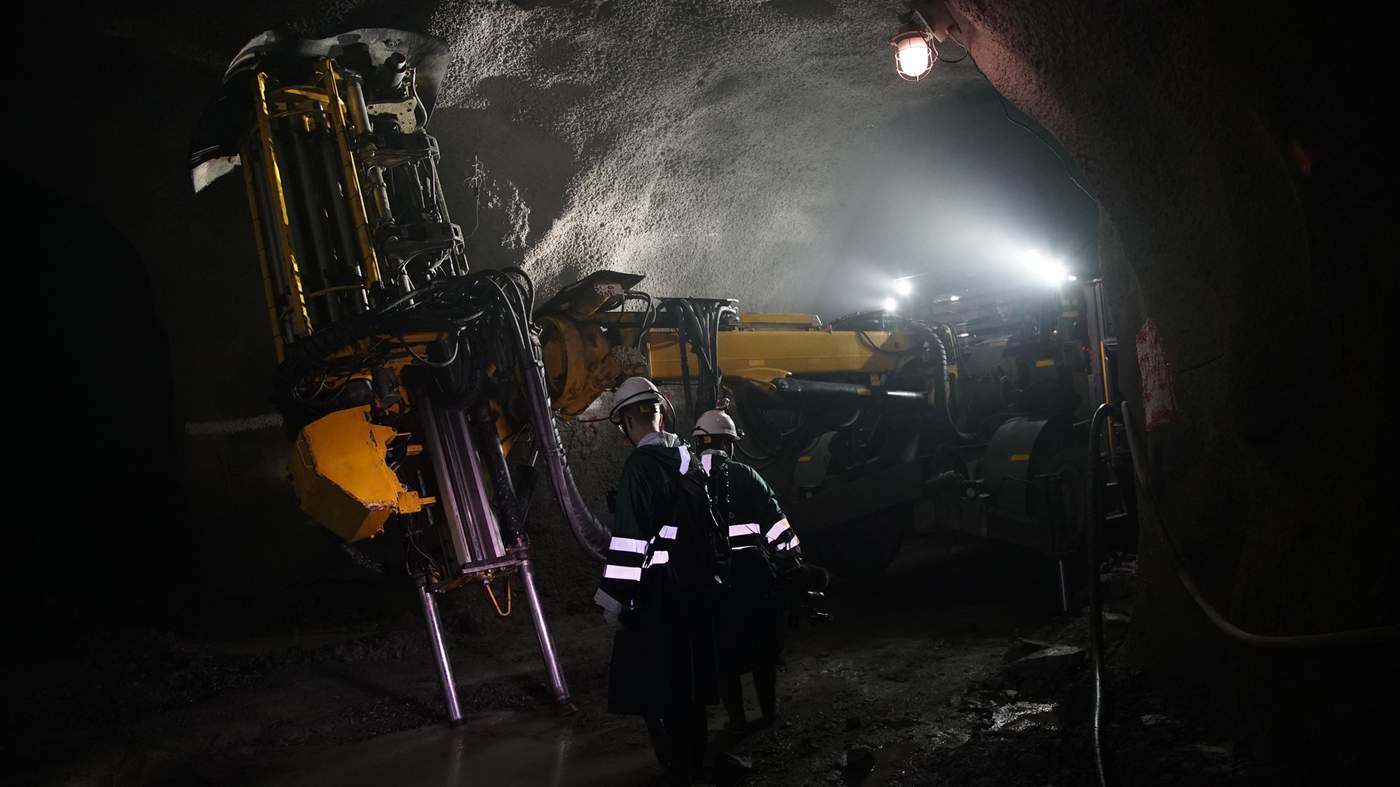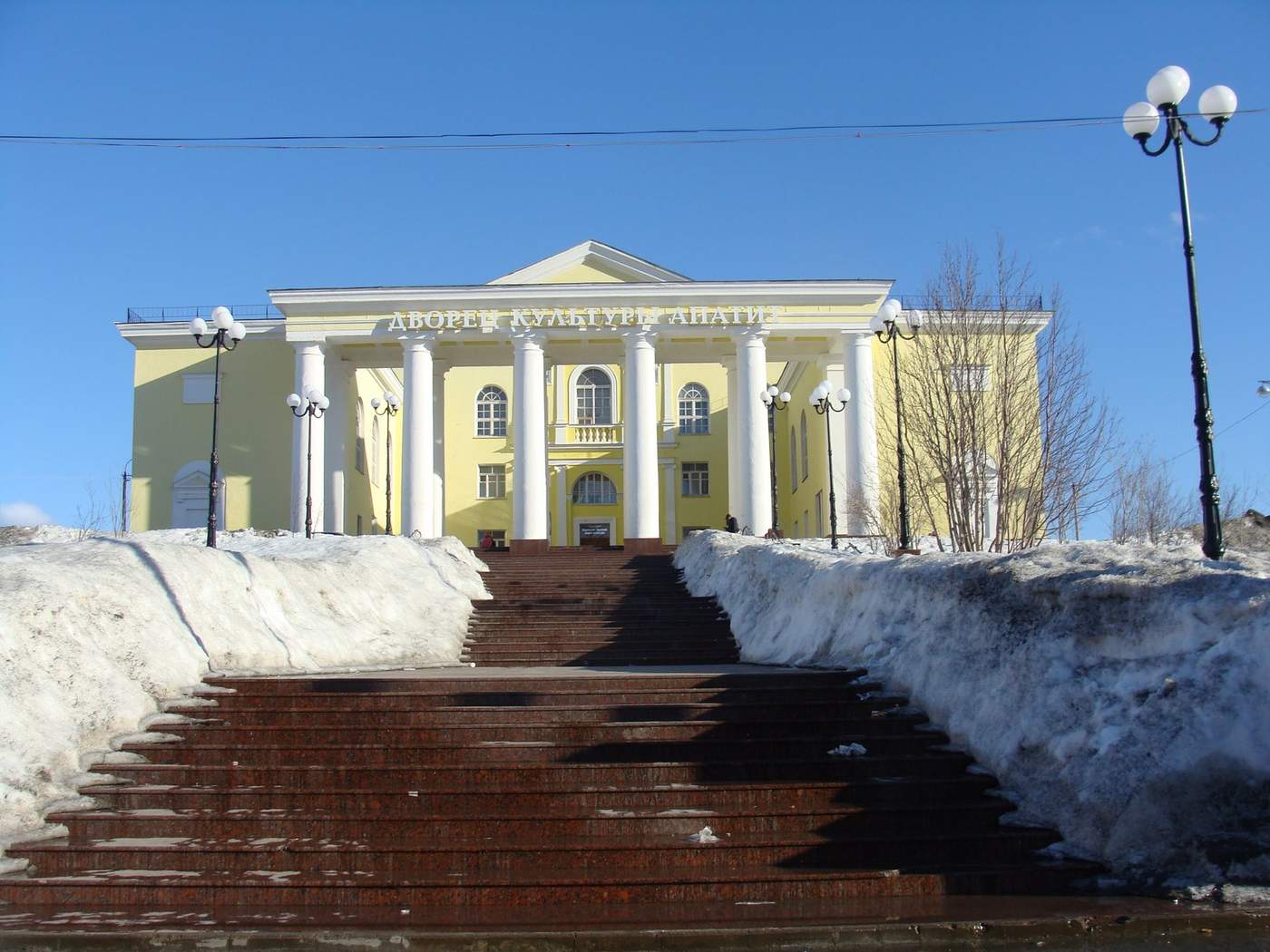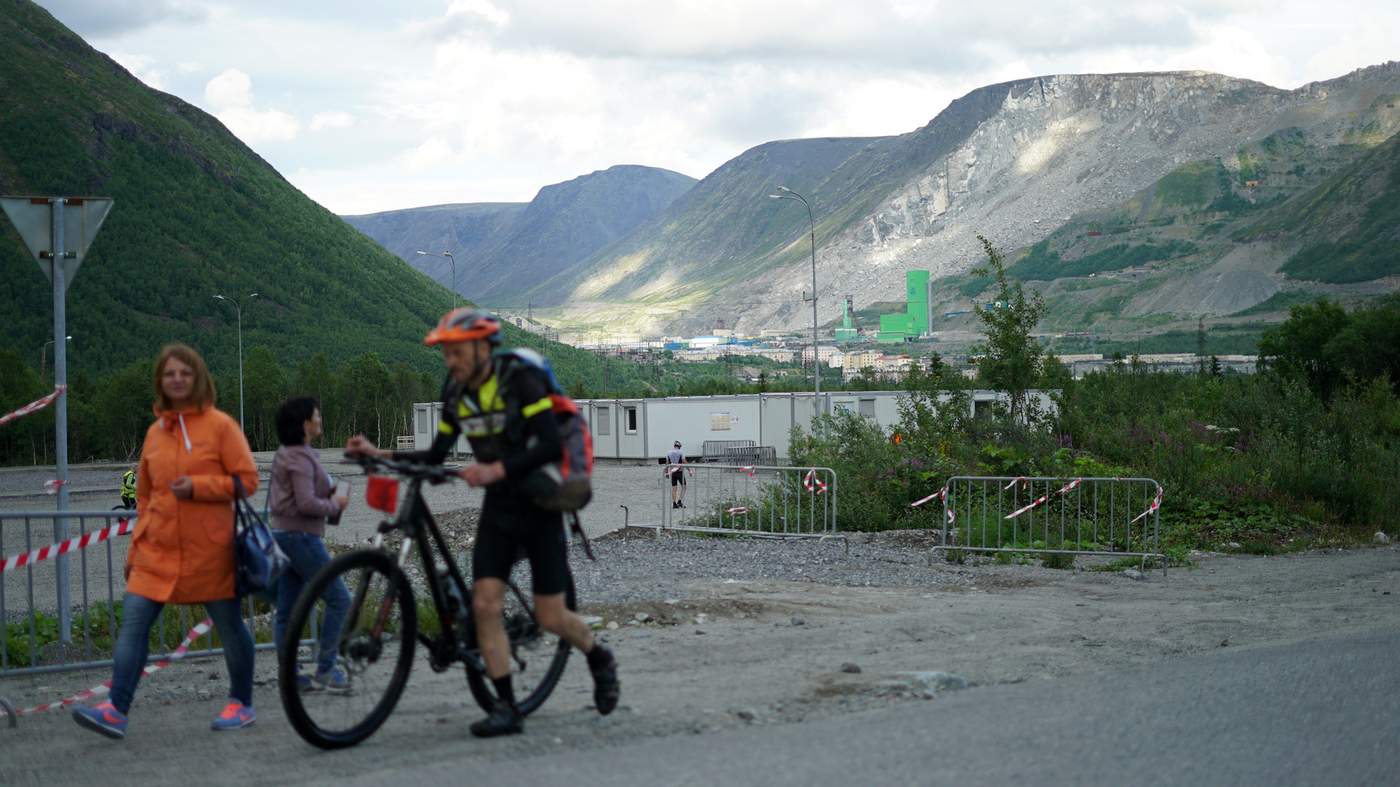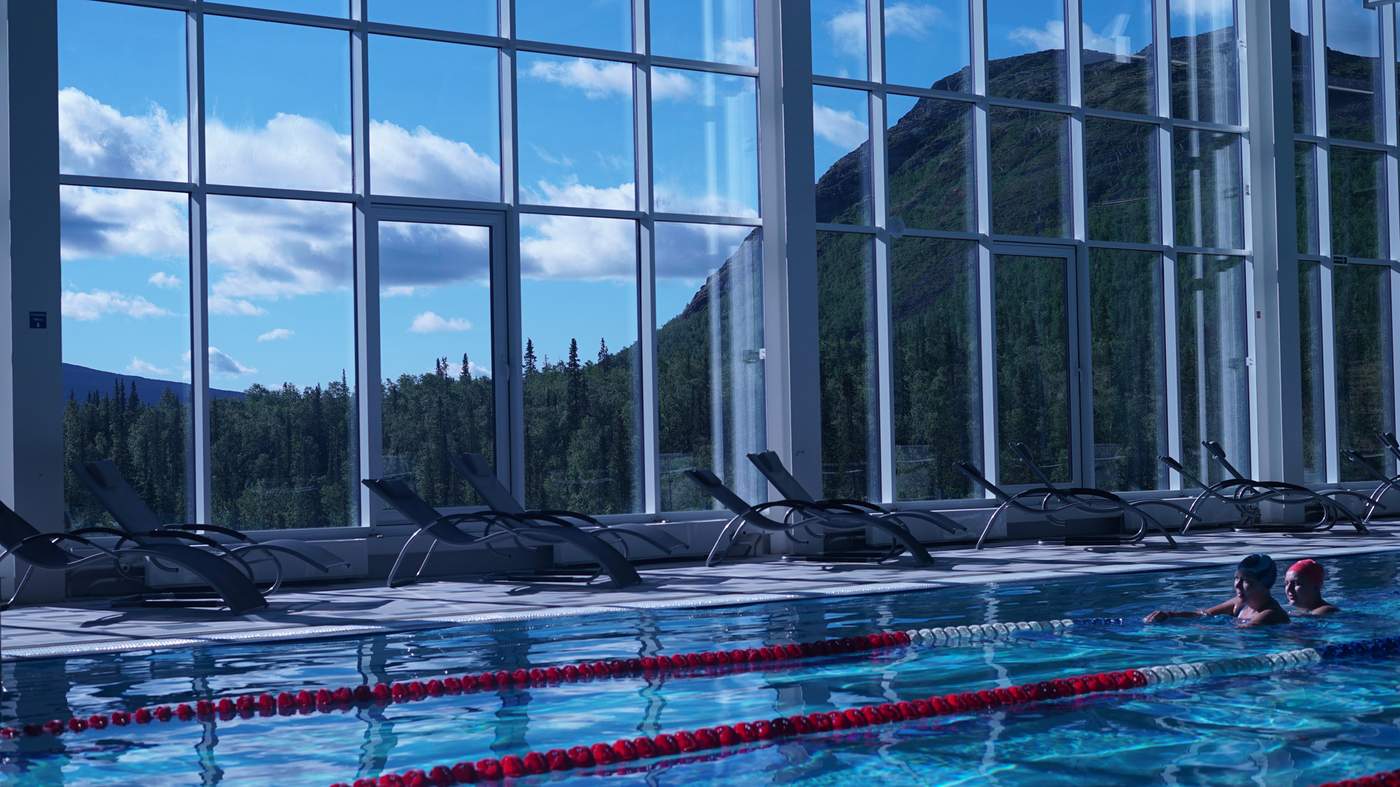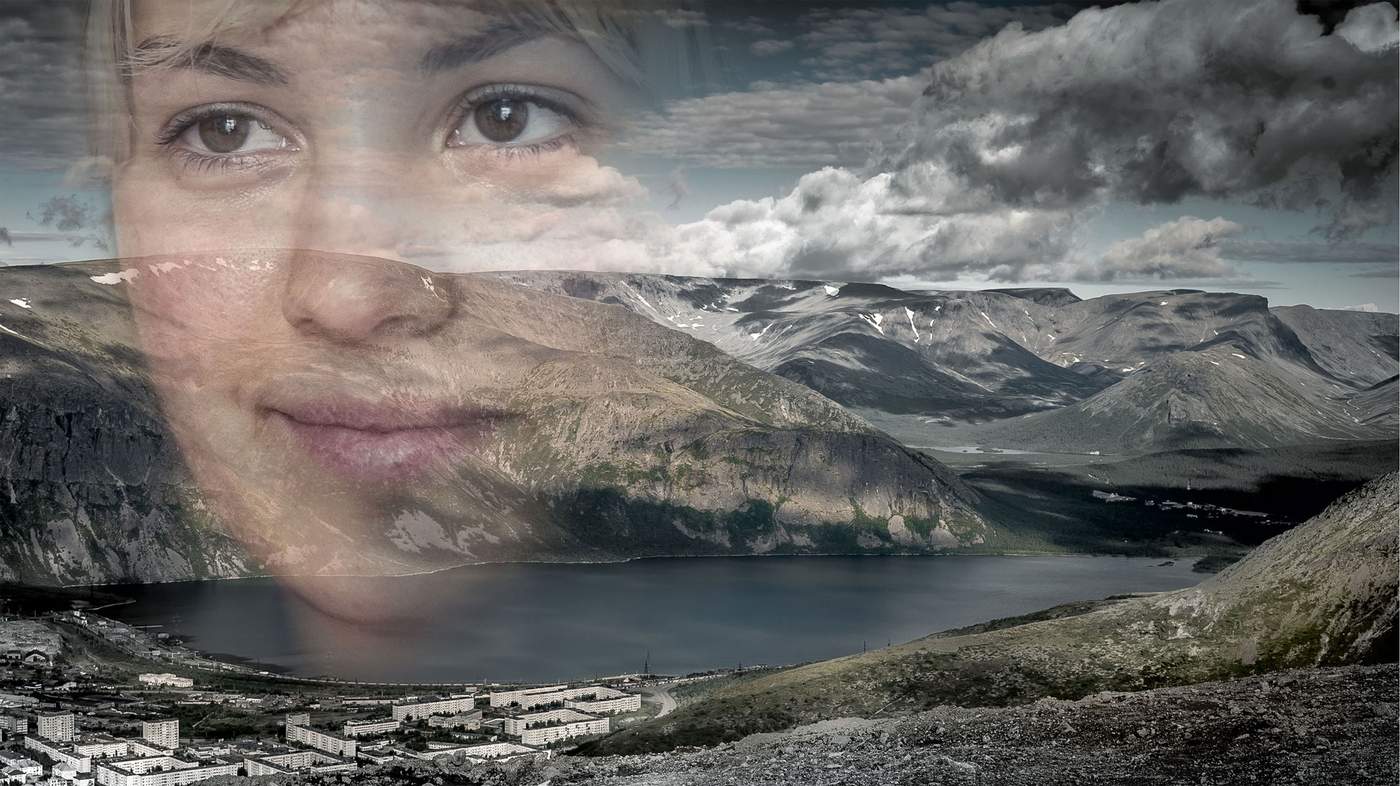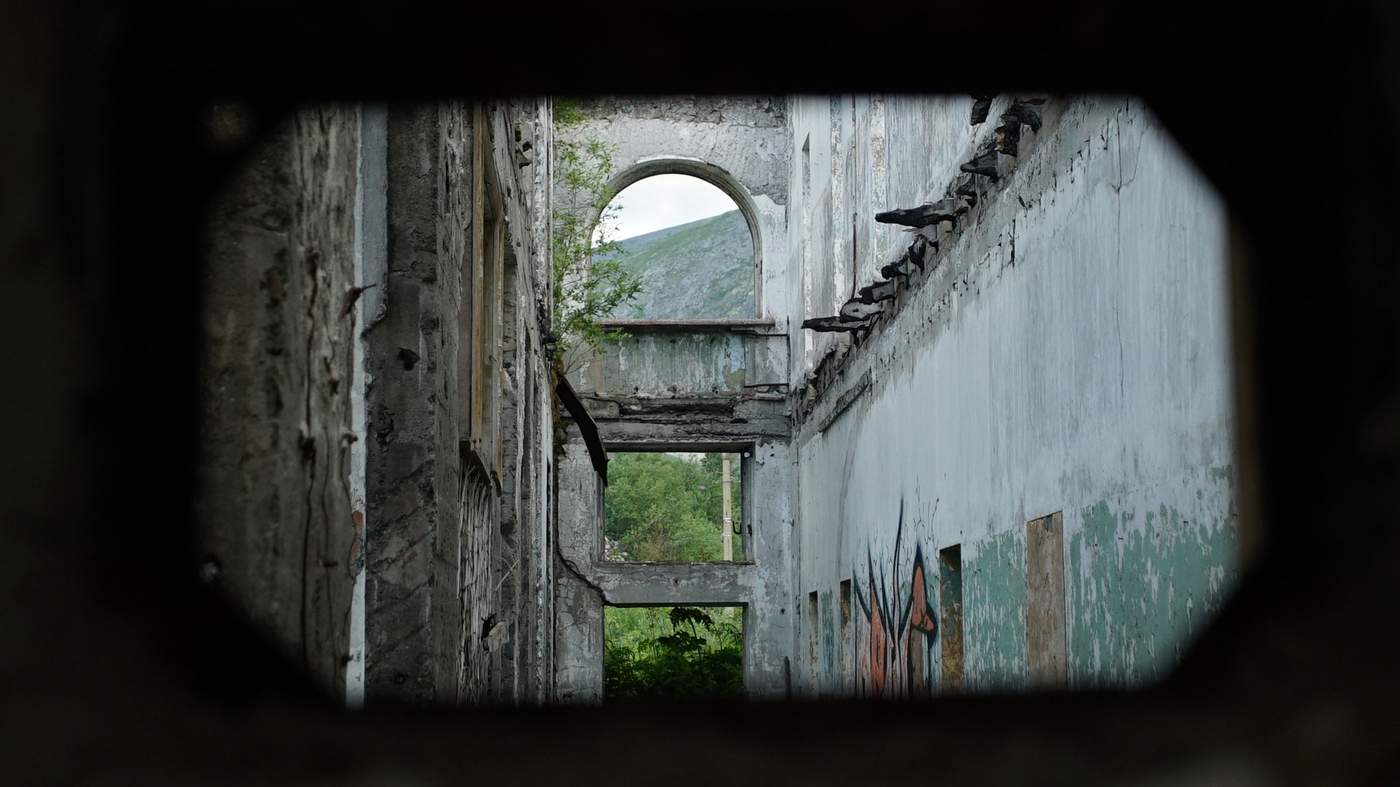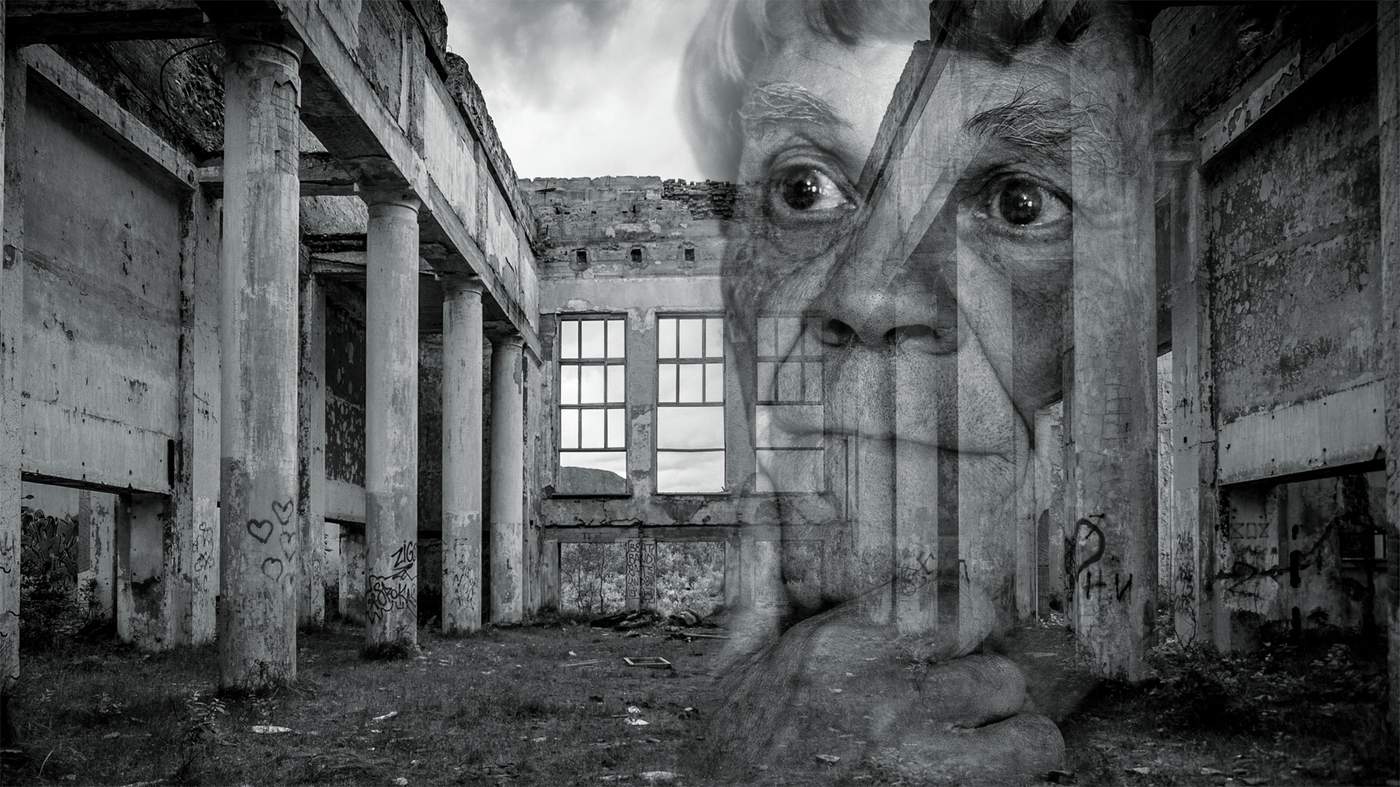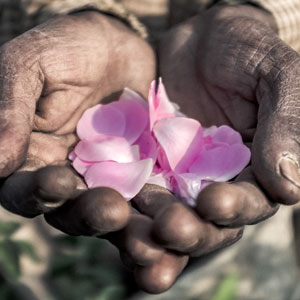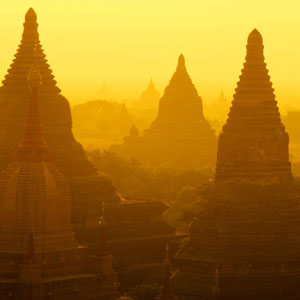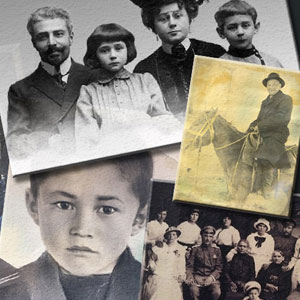It’s the summer of 1976 and people in the small Far Eastern coal-mining town of Kadykchan are flocking to their local cinema to see a new film. Foreign pictures are a big attraction and The Death of Japan is no exception. As the lights go down and the dark red curtains open, audiences are treated to an epic disaster movie about a scientist battling to save Japan from a catastrophic tsunami.
Sitting in the projection booth is 18-year old Vladimir Voskresensky, a young man with dark hair and a rakish moustache. Back home after a year at technical school, he is enjoying his first proper job.
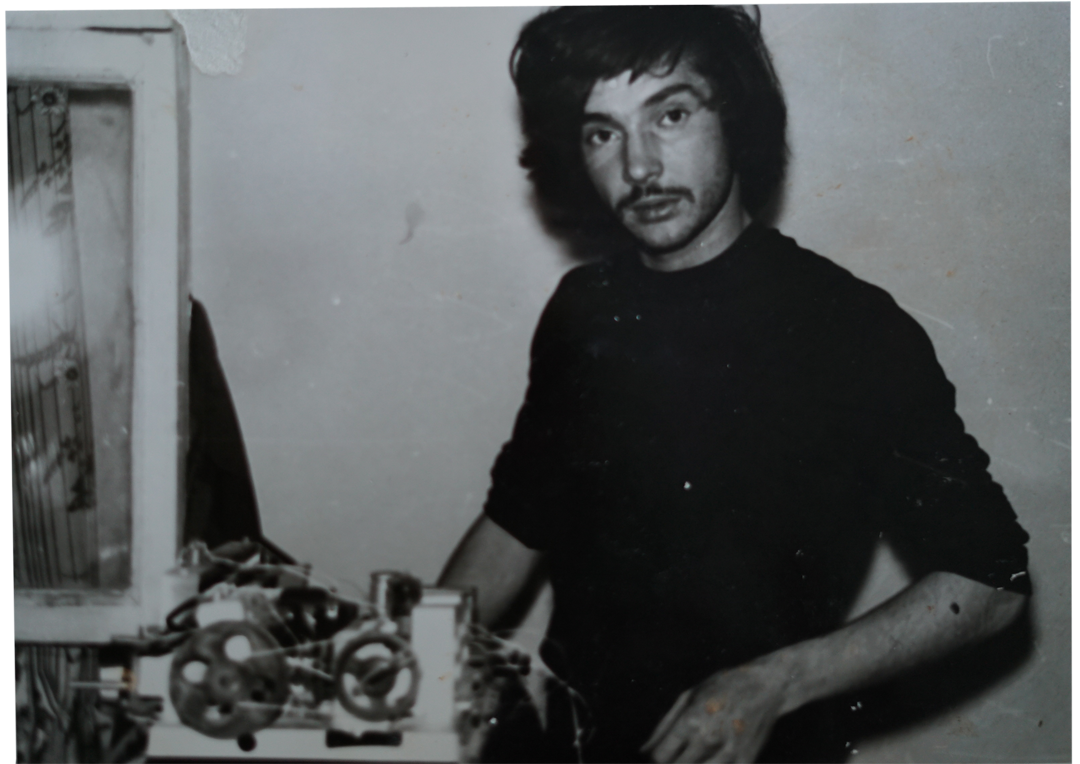
Vladimir Voskresenskiy
At the end of the showing Vladimir shuts down the projector and packs away the reels of film. Aunty Tanya who runs the cinema buffet puts away her pastries and bottles of Soviet champagne. Everyone heads home into the soft light of the long Far Eastern summer night.
None of them, not Vladimir, not Tanya, nor the cinema audiences could possibly imagine that in 20 years’ time, their own town would be facing catastrophe, and that like the fictional Japan they had just seen on screen, Kadykchan would soon cease to exist.
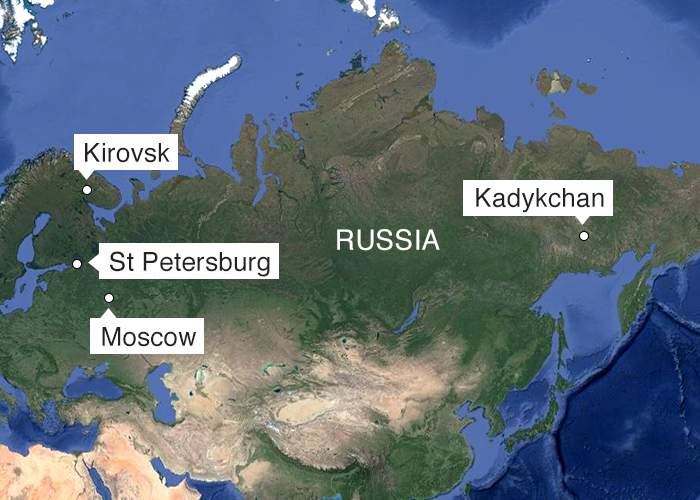
Two years after The Death of Japan, another very different film also with a disaster theme hit the Soviet cinema screens. The Investigation Commission was about an accident at a nuclear power station. It was filmed in the Russian Arctic Circle more than 2,500 miles (4,000km) and eight time zones away from Kadykchan, near a town called Kirovsk.
Kirovsk was so popular as a film location it was dubbed the Arctic Hollywood. For years starry-eyed locals had been lending a hand playing extras. But cinema wasn’t the main industry. Like Kadykchan it was also a mining town, although in this case not coal, but apatite, an ore used to make fertilizer.
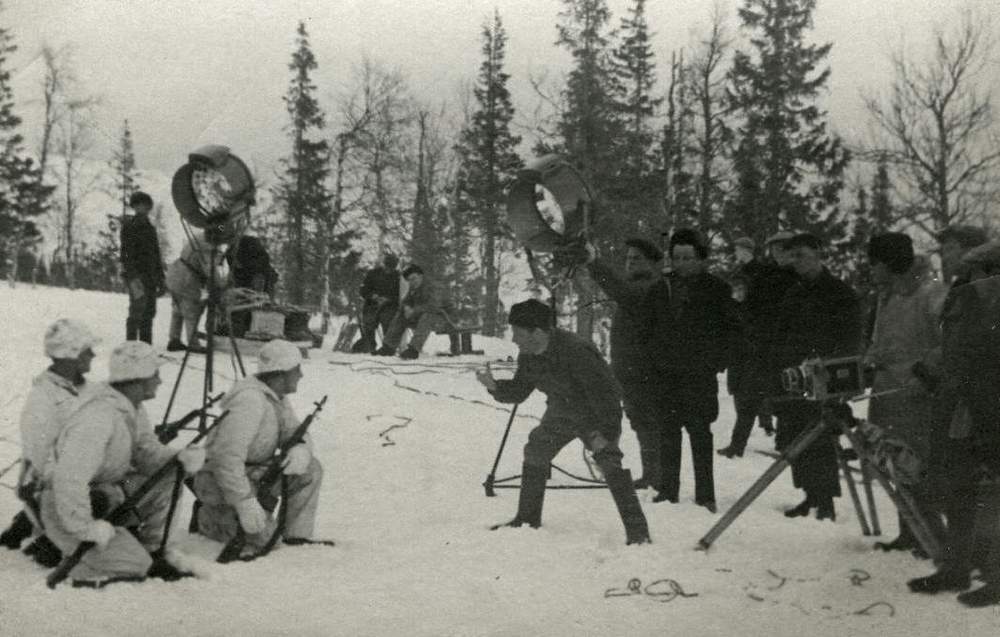
Kivorsk was frequently used as film location
In The Investigation Commission disaster is averted, but for cinema-goers in Kirovsk looking out for familiar scenes and faces up on screen, the film contained a prophetic message. Within two decades Kirovsk also found itself on the brink as the Soviet Union collapsed and the local mining industry faced bankruptcy.
The story of how Kirovsk survived and Kadykchan did not, is the story of one of the most urgent problems now facing Russia. It’s a problem familiar to many other industrialised countries.
In the hot sun of an August afternoon, Vladimir Voskresensky is striding up October Street pointing out familiar places in the small town where he spent some of the best years of his life.
“There’s the baker’s where I used to nip out in my breaks to buy rolls,” he says. “Next door is the tailor’s where all the latest fashions were on display. And that’s the sports hall where I used to go after work.”
We are walking past rows of abandoned Soviet-era buildings - windows gaping, roofs sagging and entrance ways overgrown. The air is still and it’s almost frighteningly silent. But as Vladimir points out familiar places, he seems to conjure up the spirits of the past and the ghost town of Kadykchan comes slowly back to life.
If you experience problems with this video you may want to change your browser.
Vladimir has lived in Magadan region in the Far East all his life. His family story is typical of this vast and remote area, a place so far away that people here refer to the rest of Russia as “the mainland”.
In 1938 his father Mikhail, who was from near Moscow, was sent to a labour camp here to serve out a five-year sentence for a minor criminal offence. “He never said much about it, but I know he escaped being shot twice because he was a good worker.”
His mother Yevtaliya, who was from Ufa in the Urals, arrived in 1946 as a volunteer with the Communist Youth Organization. “Young people were different in those days. They wanted to build things and do something good for the country.”
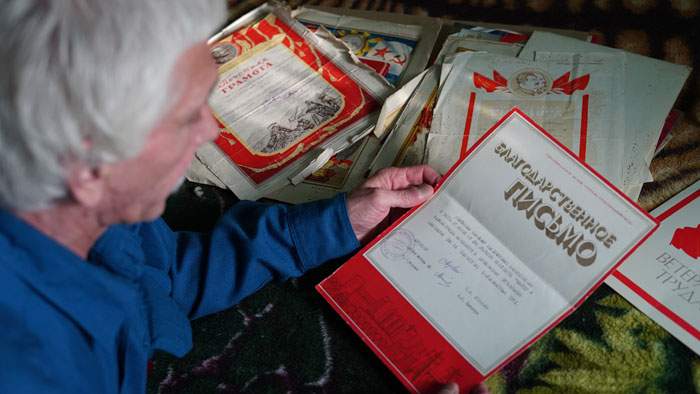
Both parents were electricians and worked at the many power plants and generating stations dotted across the region. In 1974 the family moved to Kadykchan, a small coal-mining town.
Like every settlement in this part of Russia, Kadykchan started life as a prison camp.
The whole area is known colloquially as Kolyma, after the vast river that runs through it. Its name still strikes fear in the hearts of Russians.
It was opened in the 1930s by Stalin who wanted access to its mineral, metal and gold deposits to support the rapid industrialization of the USSR.
In the brutal logic of those times the quickest way to exploit Kolyma’s riches was to use forced labour.
Almost a million prisoners passed through Kolyma in the quarter of a century that the camps operated here. At least 200,000 died in the unforgiving conditions - poorly fed, ill-equipped and facing winter temperatures as low as -50C.
Varlam Shalamov, one of Soviet Russia’s most important writers, spent nearly two decades in the camps here, including two brutal years in Kadykchan working in the newly opened coal mine.
Shalamov was sent to Kadykchan in 1940, just two years after Vladimir’s father arrived in the camps.
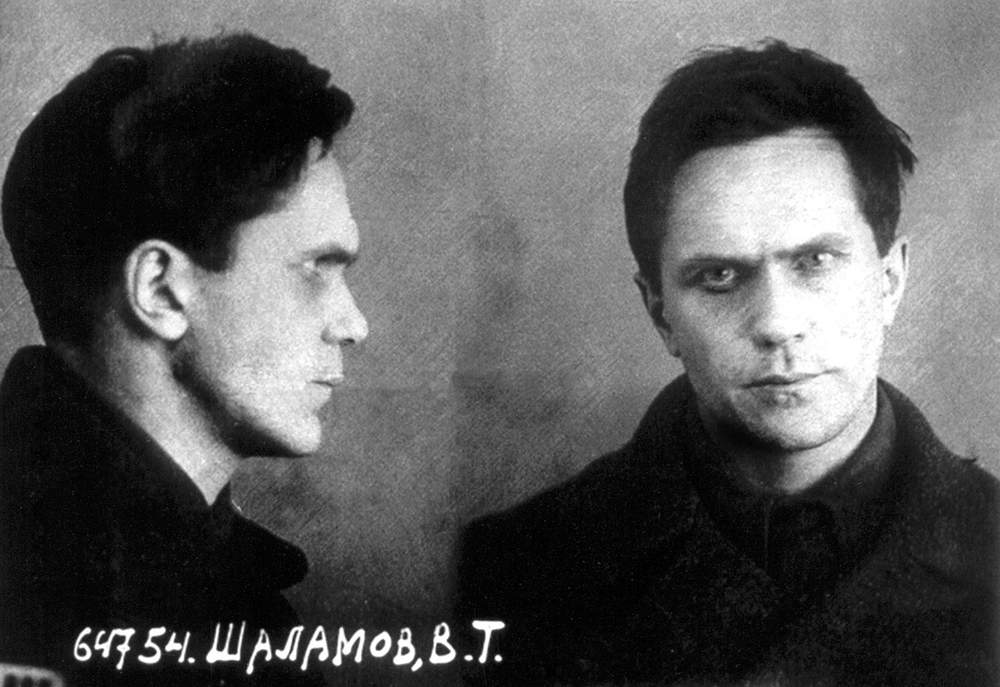
Varlam Shalamov (RGALI)
In his searing collection of short stories, Kolyma Tales, he summed up life for prisoners at the mine.
“Bloody blisters, hunger and beatings. That’s how Kadykchan welcomed us.”
By the time Vladimir and his parents moved to Kadykchan the camp had long closed down and the town’s two coal mines Number 10, and Number 7 were operated by civilians. Miners came from other coal-mining areas all over the USSR, attracted by the promise of a flat and a good salary. The population was growing and would reach almost 6,000 people by the end of the following decade.
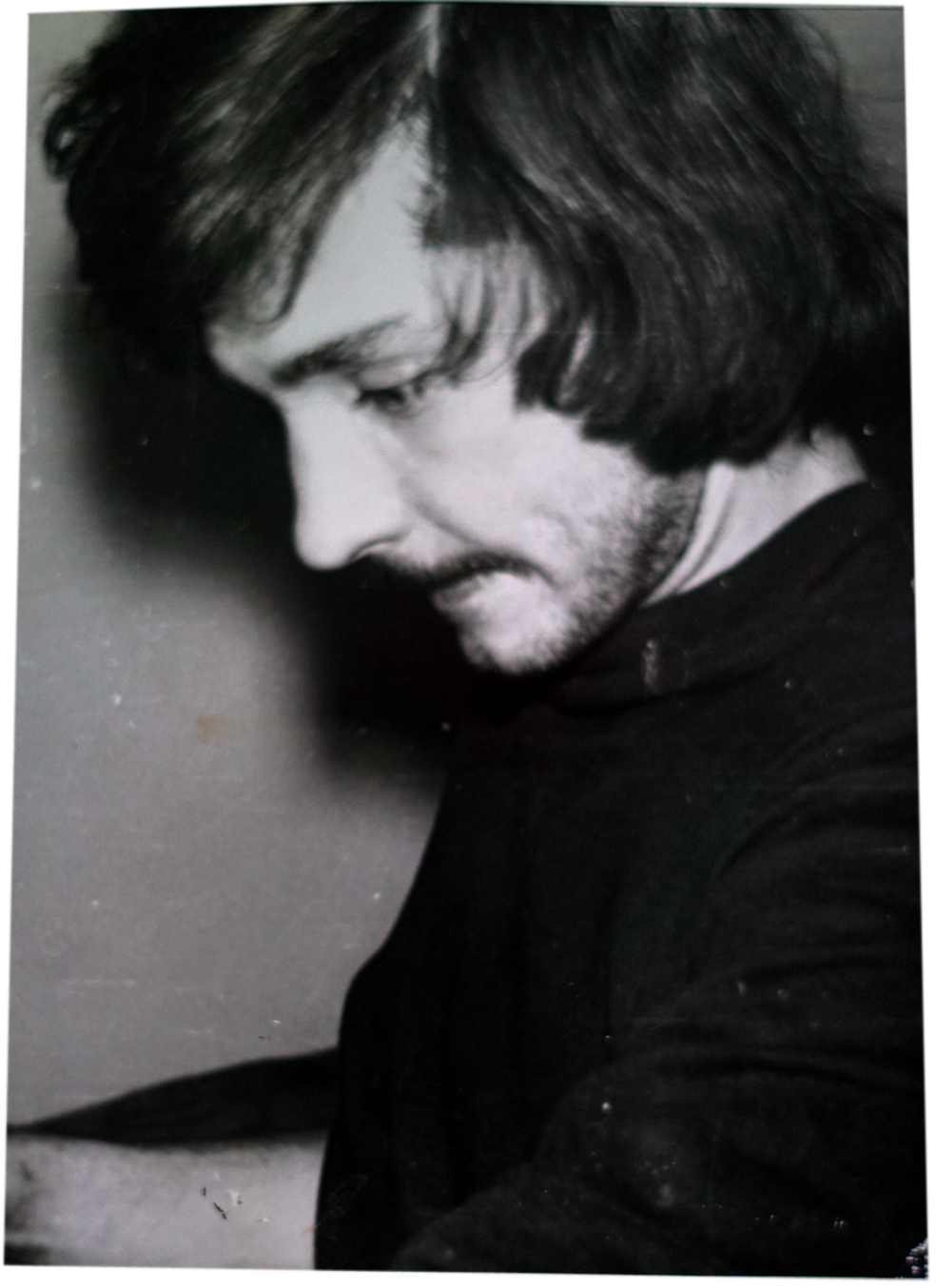
In the 1970s, life in Kadykchan was good. The Soviet Union looked after its industrial workers, especially those working in far-flung outposts like Kolyma.
The local shops were well supplied with goods and the Polar Restaurant always had wine and live music. There was a hospital and two schools. In the long Northern summers the local cultural centre hosted a White Nights music festival, and there were Alain Delon films on show at the newly opened Coal-Miner’s Cinema, where Vladimir spent nearly seven years working as a projectionist.
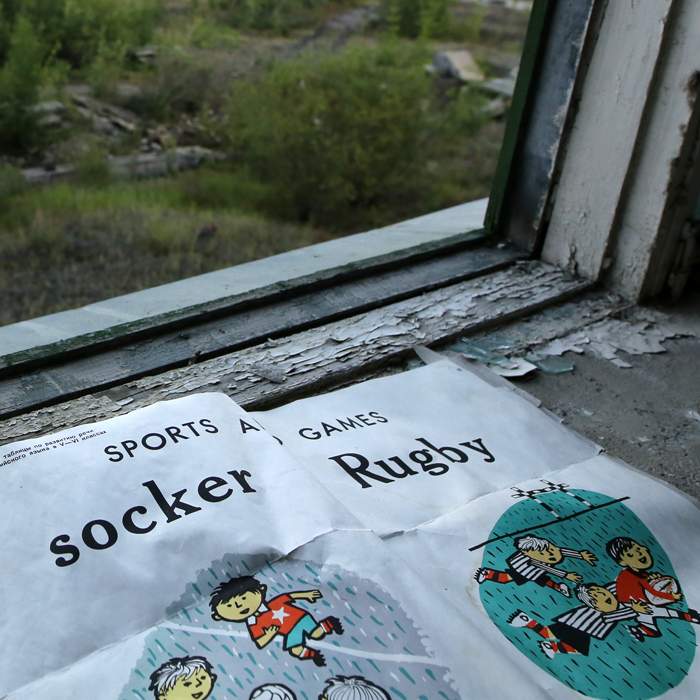
Everything in the town was organized around the mine, including the cinema performances, which were spaced across the day in order to accommodate the miners’ shift patterns.
Vladimir remembers happy days celebrating birthdays and holidays in the cinema staff room.
We used to hang fish to dry in the space over the stairwell, and you could always get a cold beer from Aunty Tanya in the buffet.”
Kadykchan was a town full of young people, where the distance and the extreme climate brought people together.
“I always loved those winter evenings when the temperature rose to -30C, and it felt warm enough for everyone to come out for a walk on our main pedestrian street – we called it Broadway.”
In 1987 Vladimir left Kadykchan and moved to a job at a nearby local power plant. His new home was 15 minutes’ drive away, and from the fifth floor windows of his new flat, he could still see the outlines of Kadykchan in the distance.
This was the era Mikhail Gorbachev’s “perestroika” reforms, and the changes that were happening across the USSR reached Kadykchan too.
Gennady Shchepalkin and his wife Tatiana were both born in the town. “I was the first baby born in the Kadykchan maternity hospital,” she says.
Gennady and Tanya met at the school disco in the autumn of 1984, with the northern lights shining in the night sky. It was love at first sight.
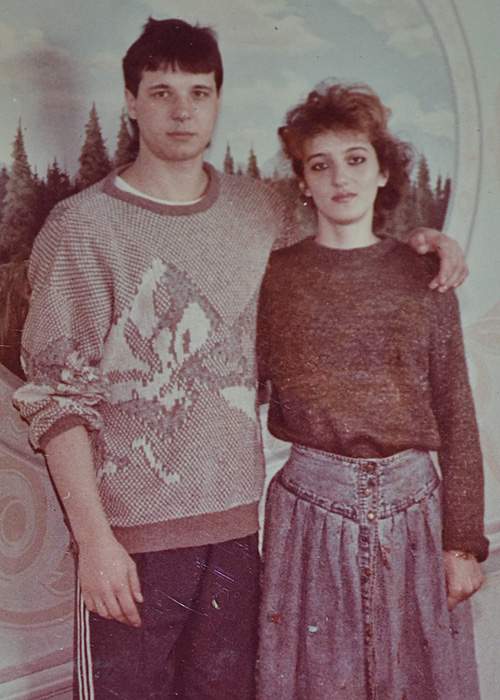
Gennady and Tatiana Shchepalkin
They got married in 1988 and the following year Gennady started work in Coal Mine Number 7.
“New people started appearing in the town,” he remembers. “The atmosphere was different.”
The Soviet command economy was falling apart. Wages at the mine were no longer paid on time, but sometimes there were unexpected opportunities.
Once we all got the chance to buy a video recorder on credit through work. There was a sudden boom in video cassettes!”
As the 1990s began and the Soviet Union collapsed, life in Kadykchan became much tougher.
“Salaries weren’t being paid and people couldn’t even buy basic things like food,” says Tatiana. “Imagine your husband comes home from the mine and you’ve got nothing to give him to eat. The children are hungry.”
Mine Number 7 closed down in 1992, its coal reserves exhausted.
People began leaving Kadykchan for jobs in other parts of the country.
And then in 1996 tragedy struck. On Friday 15 November at 1135, as the morning shift was coming to an end, a methane blast ripped through Mine Number 10.
There were 27 miners on shift, and six of them were killed. The loss was felt by the whole town.
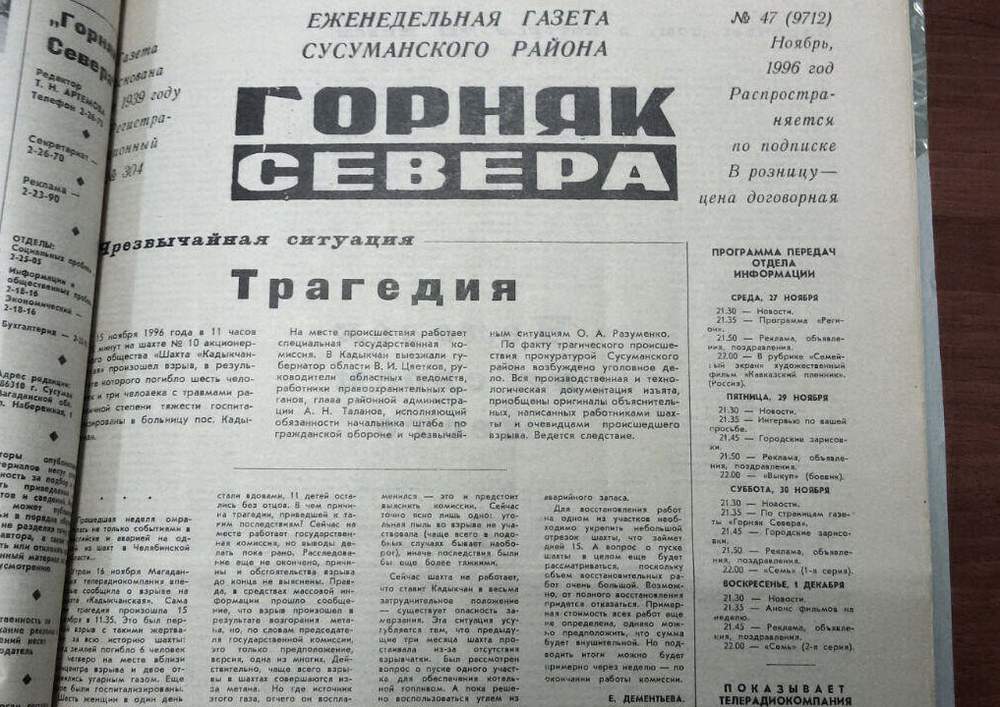
Local newspaper The Northern Miner reporting the accident at the Kadykchan mine
All work at the mine stopped and most of the staff were sent home indefinitely on reduced pay.
The local authorities decided it was not viable to keep the mine running and over the next two years the tortuous process of negotiating its closure dragged on.
The local newspapers from that time were full of stories reflecting the desperation of Kadykchan residents facing poverty, uncertainty, and a real fear each winter that the town’s failing central heating plant would stop working.
In 1998 the end finally came.
The entrance to Mine Number 10 was blown up and the mine shaft flooded to stop intruders getting in.
After 60 long years, coal-mining in Kadykchan was finished. Without it the town no longer had a reason to exist.
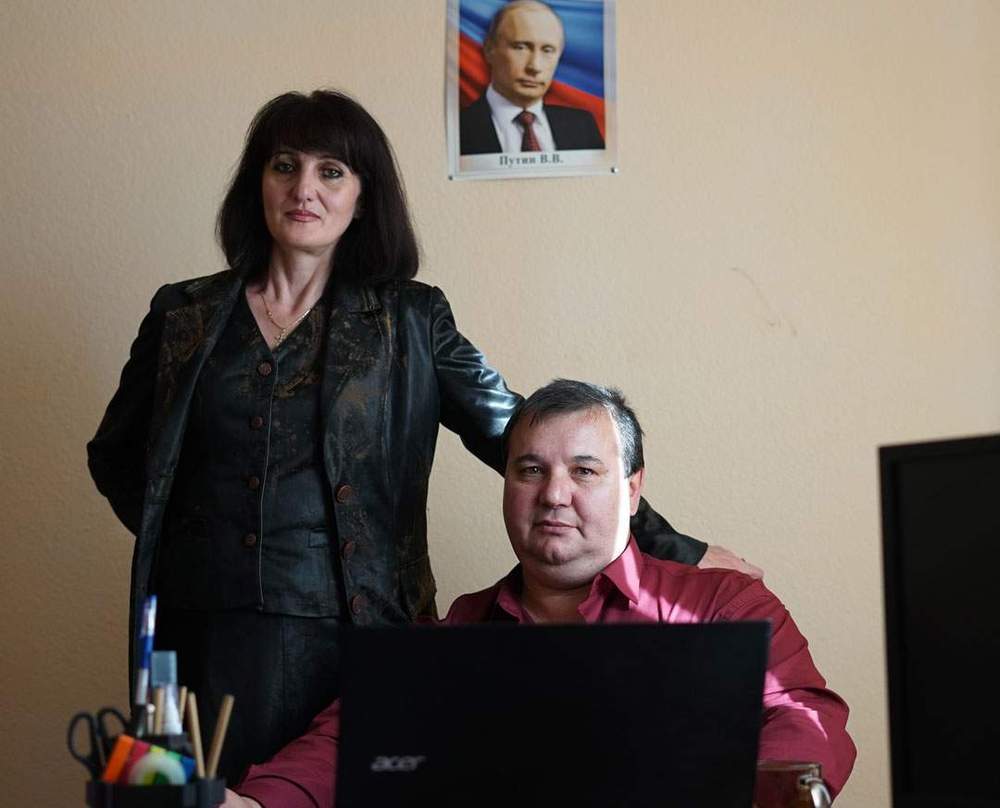
Tatiana and Gennady today
Everyone made plans to leave. Tatiana’s aunts were among the last to go.
“It was terrible. People were in a panic because it was almost impossible to find somewhere to live with the small amount of compensation on offer,” she says.
“The money was given as a certificate which expired after a short time, so if you didn’t manage to buy anything you had to start all over again.”
Things were so desperate people were shooting dogs for food.”
As the last residents moved out, the local council moved in and set fire to all the main buildings.
The Coal-Miner’s Cinema went up in flames and the roof crashed down onto the once pristine auditorium.
Vladimir saw the smoke rising in the distance.

He still finds it hard to come to terms with what happened in Kadykchan.
“Your soul refuses to believe it,” he says. “But that’s how it is.”
At the Russian Presidential Academy of the National Economy and Public Administration in south-western Moscow, a conference is getting underway.
People from 14 different regions are taking part, from Yakutia in the Far East to Yaroslavl in central Russia. All are facing the same problem – they represent monotowns – places like Kadykchan where the local economy relies on a single, often struggling industry.
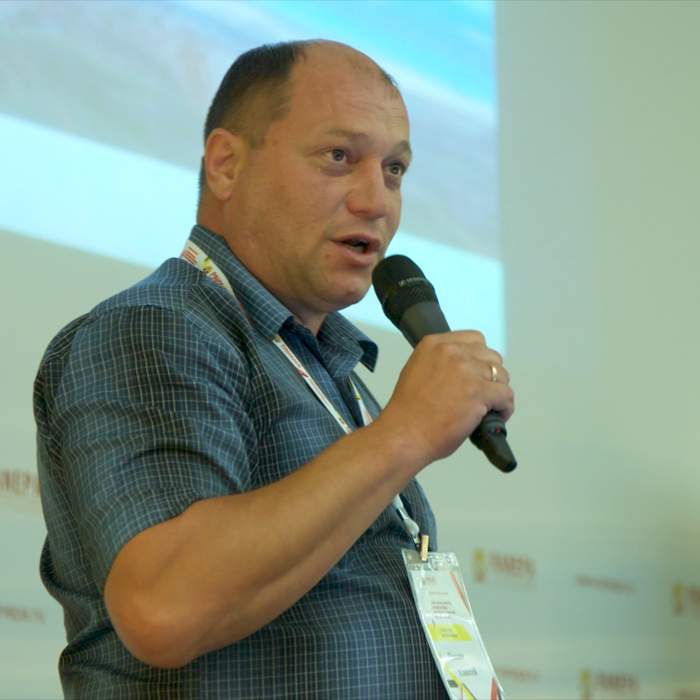
Aleksey Panin - Mayor of Sherlovaya Gora
At a quarter past one, it’s the turn of a team from Sherlovaya Gora, a remote Siberian mining town close to the Chinese border and with a population of just over 12,000 people. Taking a deep breath before a Powerpoint presentation full of management jargon, town mayor Aleksey Panin outlines the results of a SWOT analysis of the local economy.
We have strengths, he says – lots of coal and other minerals, and proximity to lucrative markets in China. There are weaknesses – high electricity costs, poor medical facilities and rail links. There’s a big opportunity – to develop tourism at the nearby national park, but there’s also a threat – competition from China.
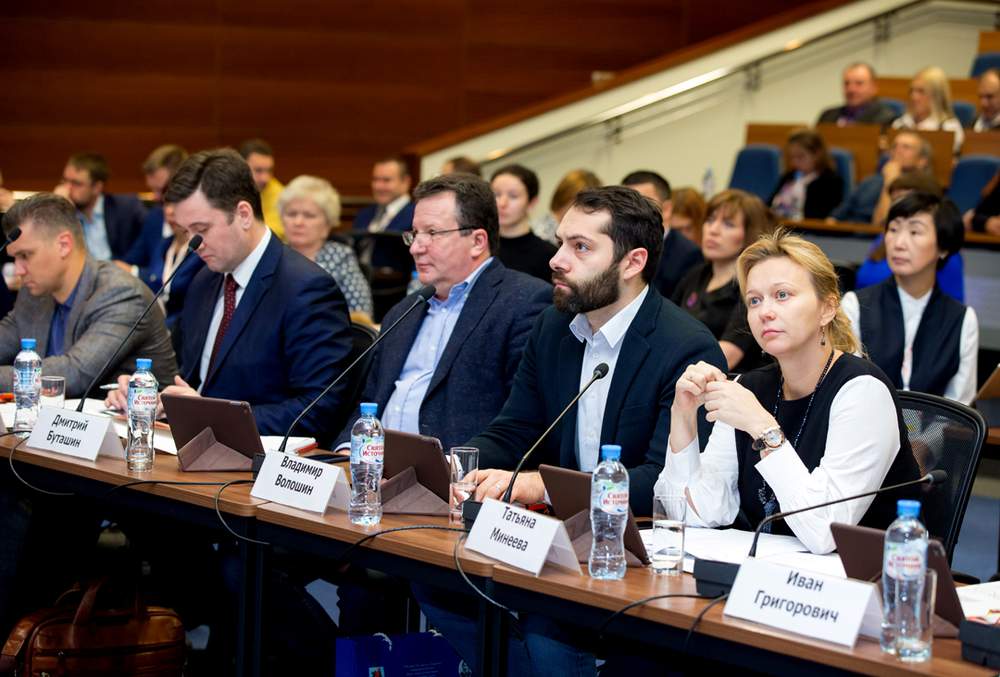
Delegates at a monotowns conference
All in all, members of the team say they can see possibilities to expand local industry, develop standards of living, and by 2035 they hope to be a major centre for industry and agricultural production. It’s an optimistic overview of a situation which sounds challenging in the extreme.
The conference is all in a day’s work for Elena Dugina, an upbeat academic who has studied and taught in the UK and now runs the Monotowns Educational Development Programme at the Academy.
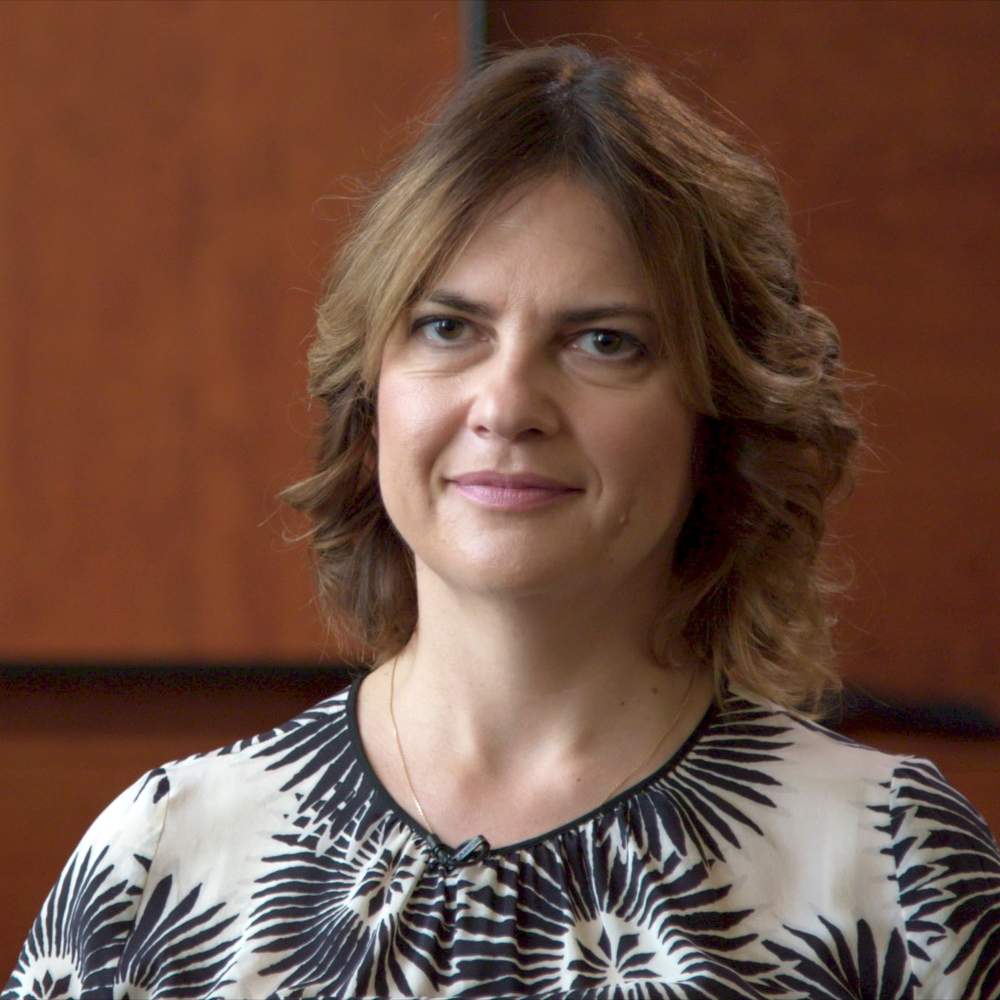
Elena Dugina
It’s her job to help monotowns to diversify and to get themselves off the critical list.
There are currently 319 towns on the government’s at risk list. They are dotted across the country and according to the State Duma they’re home to around 10 percent of the population – that’s more than 14 million people.
They range from small places with no more than 8,000 inhabitants to big cities like Cherepovets, a major steel producer, and Vorkuta, home to the Far Northern coal industry.
“Monotowns are divided into three categories,” Elena explains. “In the first everything is OK for now, but we need to think about the future when the goods they produce may no longer be in demand.
“The second is where production is already falling. And the third is the most dramatic, where the local factory has either closed or is about to be closed down.”
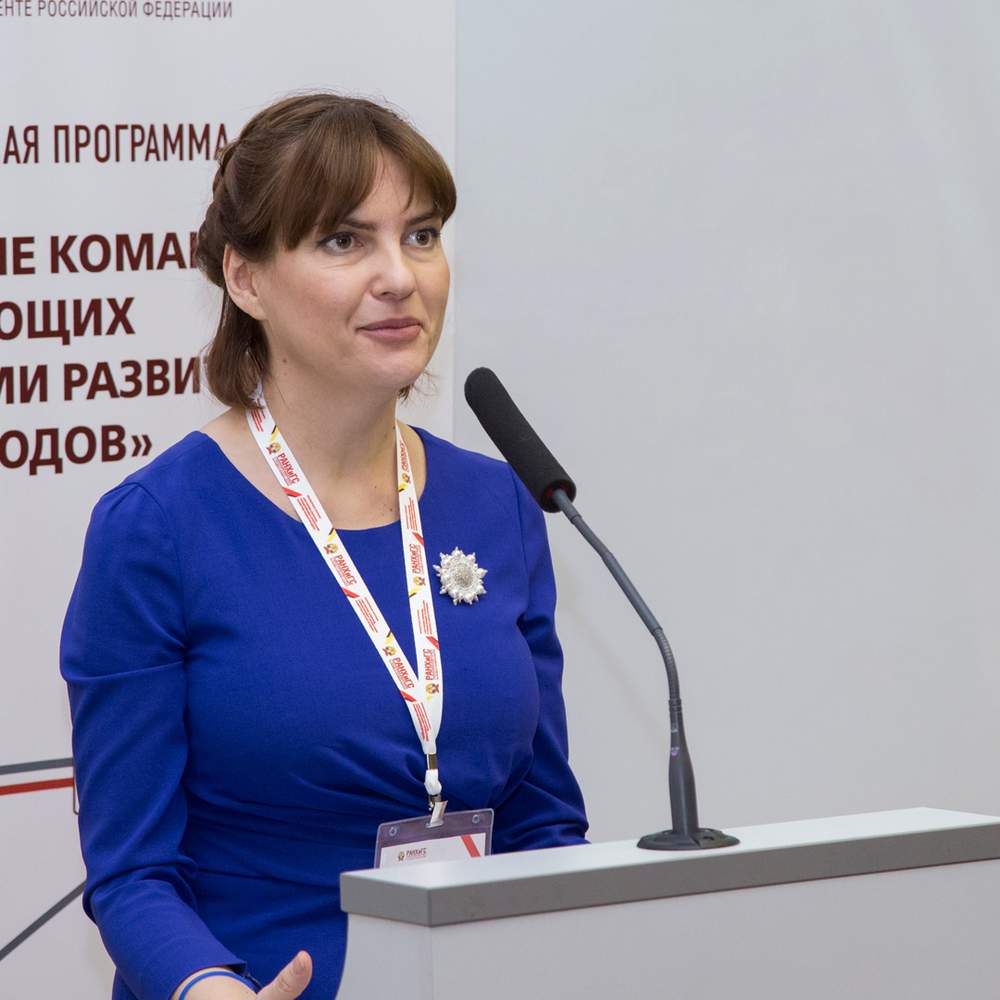
Elena presents at the conference
Monotowns tend to have twice as many people out of work as an average town, and a survey in 2016 by the Federal Guard Service showed that as many as 60 percent of monotown residents described their lives as “intolerable” or “barely tolerable”.
The numbers are clearly a cause for concern for the Russian government, all the more so as the country deals with a turbulent global economy and the effects of international sanctions over the annexation of Crimea. All this with a presidential election looming in 2018.
Three years ago a new national programme was set up to tackle the problem. The Development Fund for Monotowns has a budget of just over $450m (£335m) to invest until 2020. President Putin himself is closely following its progress.
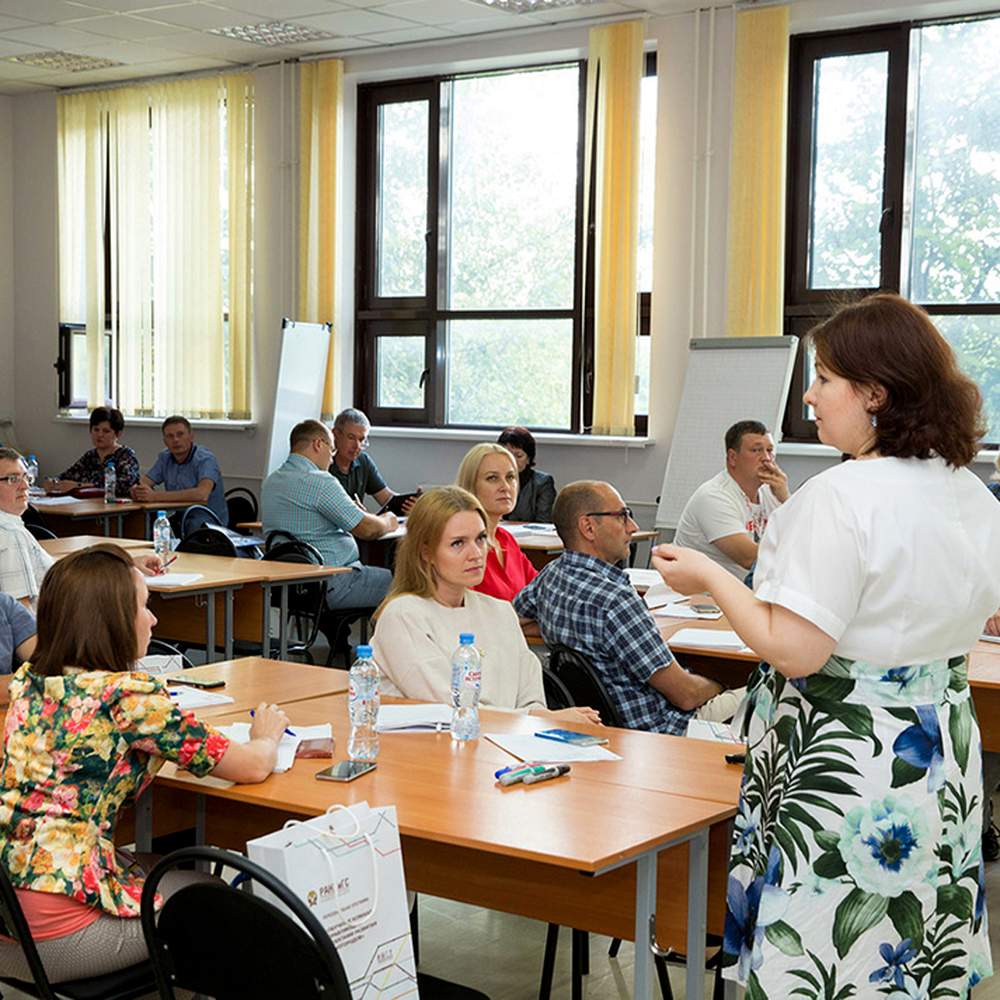
Part of the money is going to run Elena’s training programme, which aims to put five people from local government and key enterprises in all 319 monotowns through a crash course in business development over the next year and a half. The accent is very much on local people working together to help themselves.
All the towns in the programme are required to achieve a set of key indicators by the start of 2018. These include attracting independent investment, creating jobs and implementing a programme of urban renewal projects in consultation with the local community.
“It’s quite tough,” says Elena. “It’s undoubtedly pressurising them. But if we don’t do this now, then things will become more turbulent, and we will never achieve our long-term ends.”
There are already some small signs of early success. Elena cites examples of places where a toy factory, a pizza parlour, or a technopark have helped to bring new life to a failing town.
In the past 20 years, the city has lost more than half its population, as the coal industry has slowed down.
The surrounding region is full of empty and abandoned mining settlements where at most a handful of old people remain.
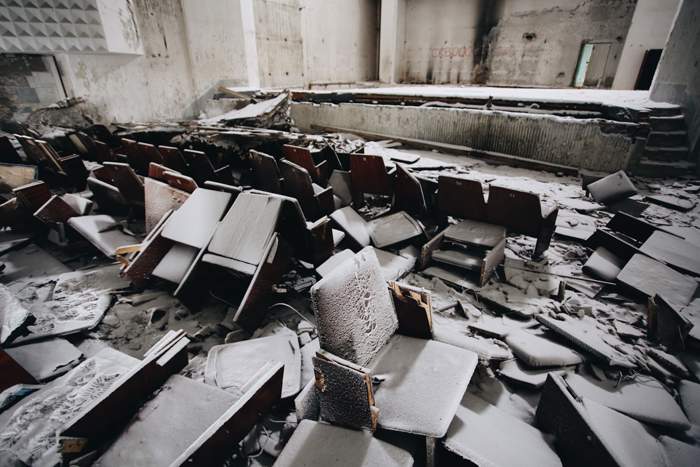
Abandoned cinema in Vorkuta
But the city now has plans in place to encourage its remaining population to stay in opening shops and entertainment centres, developing the high-tech sector and encouraging small businesses selling local handicrafts and delicacies.
But will people want to stay, and why does the government even want to keep its citizens living in remote parts of the country?
Elena offers a diplomatic answer, saying that it's not sustainable for everyone to live in big cities like Moscow, and that the Russian economy needs a network of regional hubs to bring new life to the national economy.
"Lots of people are patriots of the Far North or East," she says.
"They like living there."
But everyone acknowledges that however politically important it might be for the Russian government to have people living on the outer edges of country, not every place on the list of monotowns will survive.
Some that still have a viable local industry could bring workers in and out on short-term fixed contracts.
Others will shut down altogether.
“Not when the government decides,” says Elena, “But when the people who live there decide there’s no point staying.”
“One day in 2007 I saw an advert for film extras. They wanted men who looked beaten down by life. I thought, that sounds like me, so I went along.” Writer Aleksandr Bondarev remembers how he landed a small part as a prisoner in a television series about Stalin's gulag.
If Alexandr was looking down at heel it was not surprising. Like many people in Kirovsk - a mining town of 30,000 people above the Arctic Circle - he’d lived through hard times for much of the previous decade. A former Russian literature teacher, he was laid off in the 1990s as the economy collapsed.
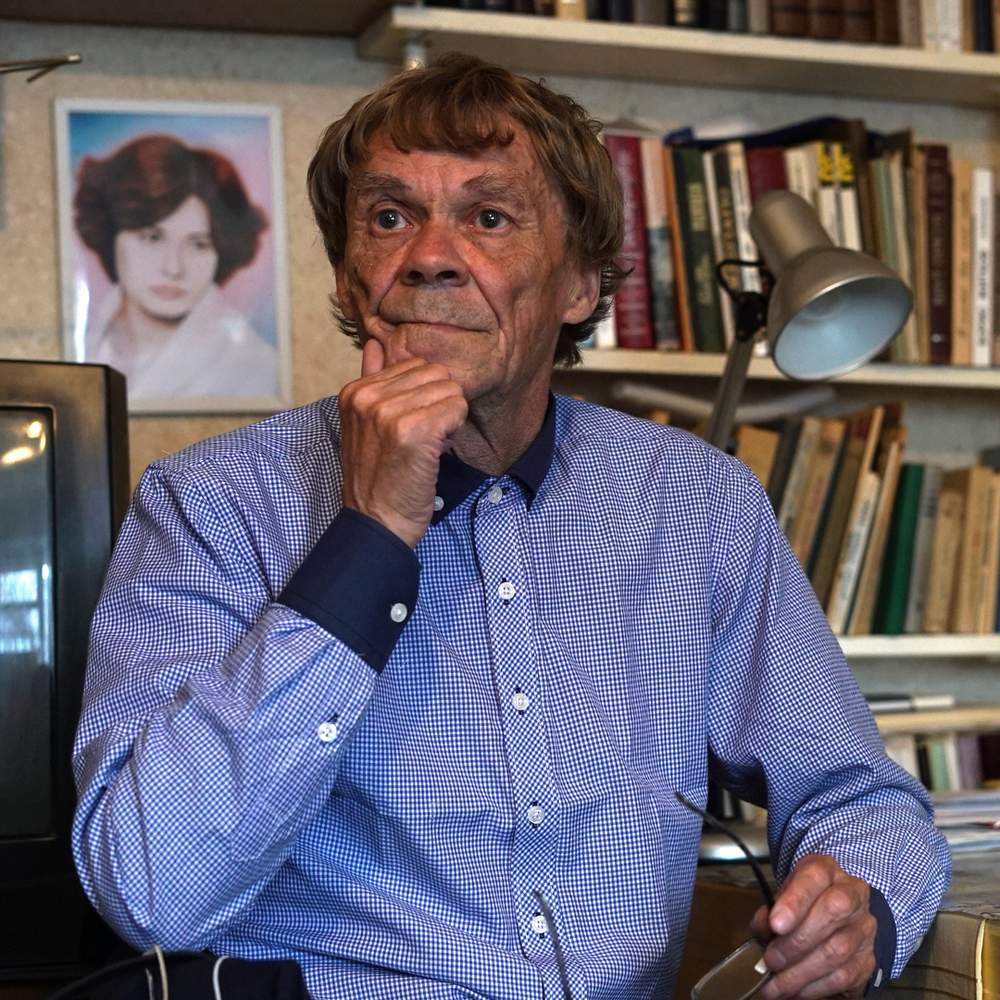
This was the decade when the town’s biggest employer, the Apatit mining company, teetered on the brink. The grand local railway station was sold off and abandoned, the airport went bankrupt, and even the magnificent Bolshevik cinema – the first sound cinema in the region – shut down.
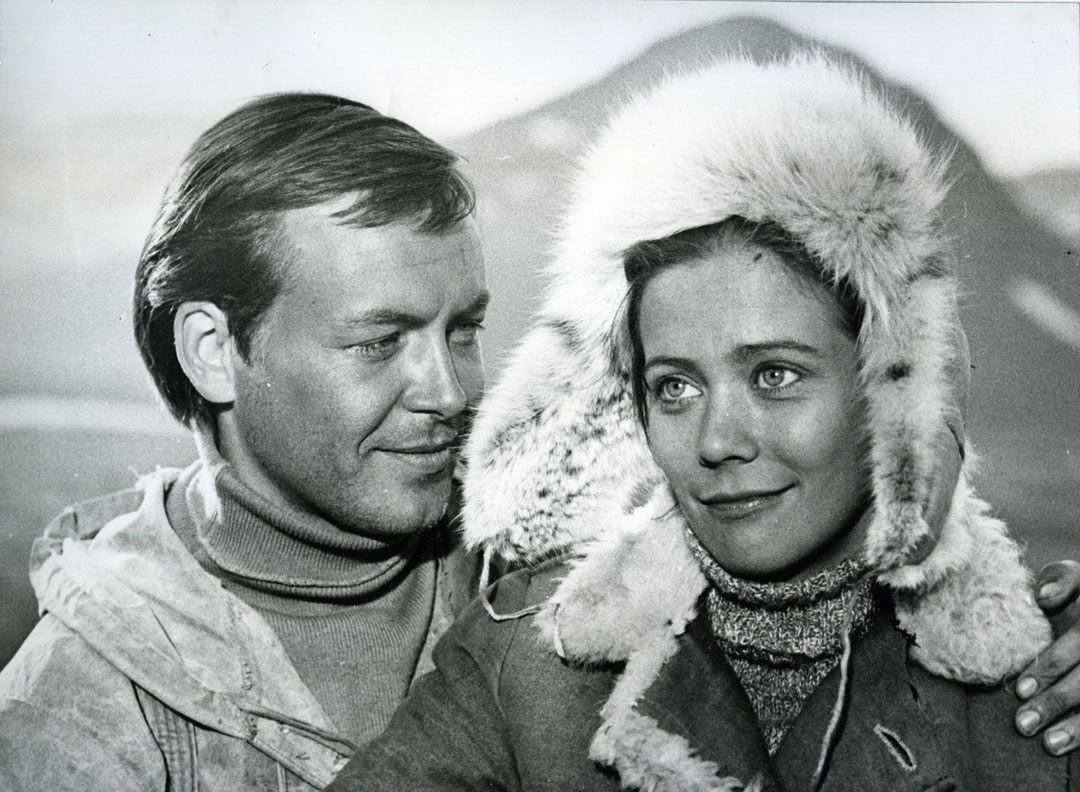
Photograph from the set of Avalanche,1975
It was also the only decade since Kirovsk was founded in 1929, when no films were made in the town.
Until 1992 Soviet film directors had flocked to Kirovsk drawn by its beautiful scenery which over the years has been used as a stand-in for everywhere from the Russian Far East to the American Mid-West. It became known as the Arctic Hollywood.
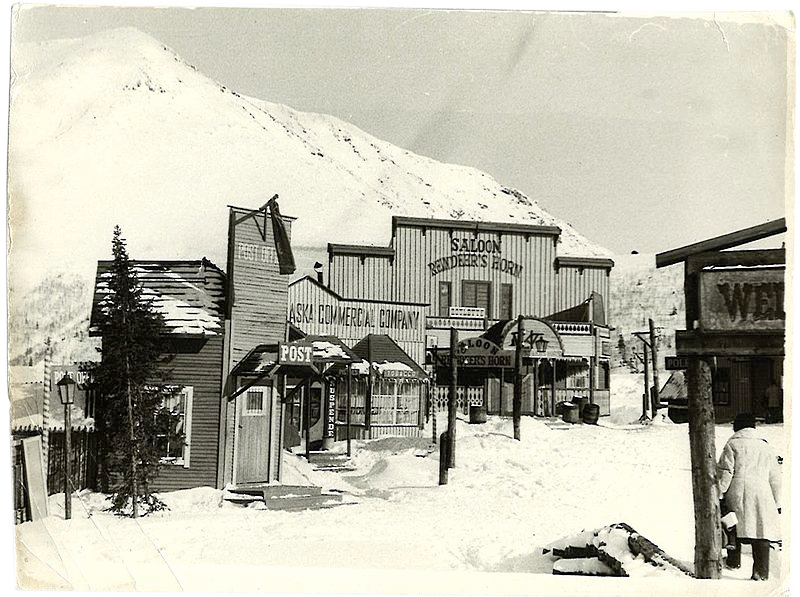
Kirovsk stood in as an American gold rush town in “Smoke and the Boy”, 1975
We’ve got mountains, rivers, waterfalls, lakes, and forests, says Aleksandr. “And it’s all just a short plane ride from Moscow and St Petersburg.”
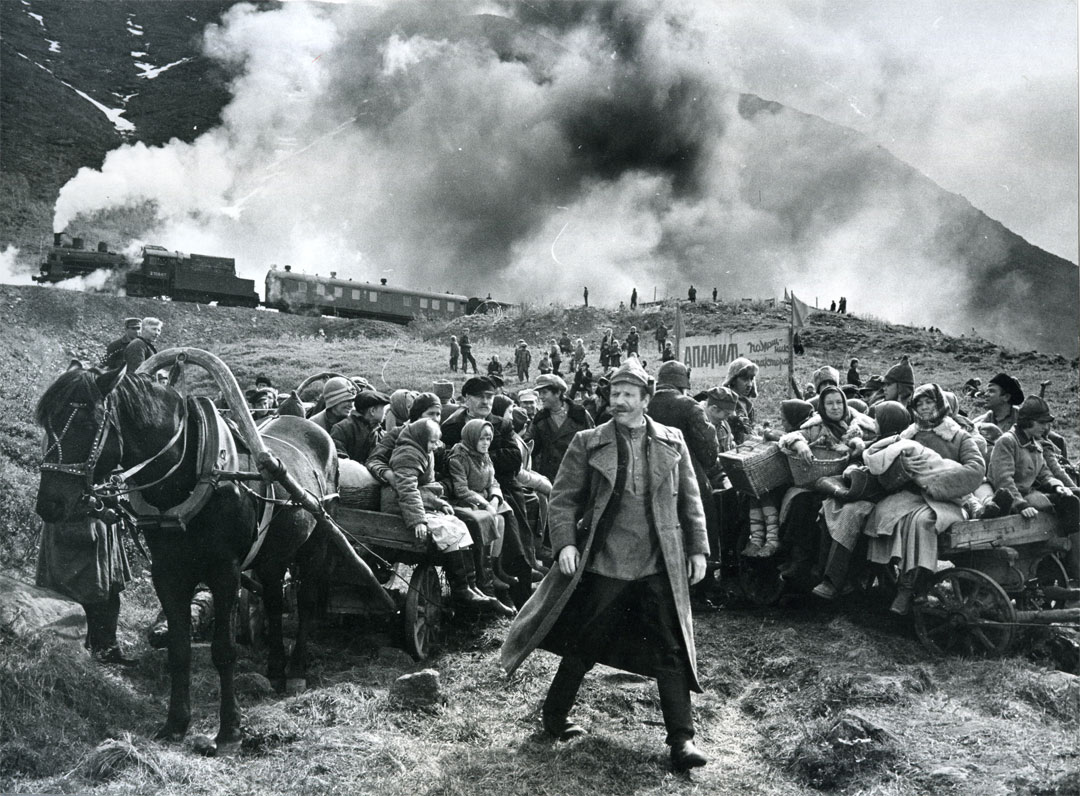
Scene from Avalanche,1975
What brought the film crews back to Kirovsk, opened up a new line of work for Aleksandr, and began a dramatic turnaround in the town’s fortunes was the arrival on the scene of PhosAgro, an agrochemicals company headed by reclusive Russian businessman Andrey Guryev.
Guryev had acquired a major interest in the Apatit mining company in the roller-coaster 1990s, when battles were fought and lucrative deals done to snap up crumbling former state enterprises.
Although the mining company needed a major overhaul, it had something incredibly valuable – some of the biggest deposits in the world of high-grade apatite, an ore used to produce phosphate fertilizers, and essential to agriculture.
Guryev also bought up a network of related industrial plants, which in 2001 became PhosAgro with Apatit as its flagship company.
PhosAgro is now transforming Apatit into a 21st-Century operation, and in the process helping Kirovsk try to diversify its economy and became less dangerously dependent on the mining industry.
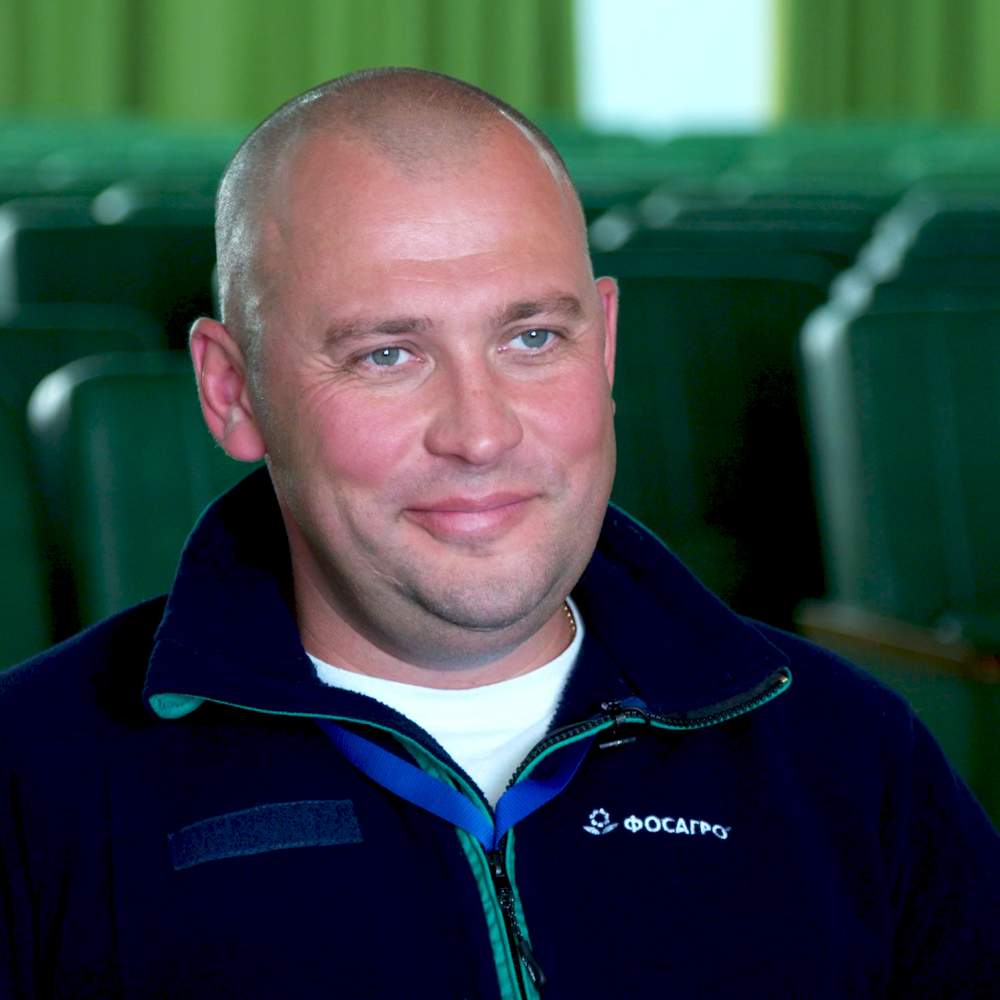
Andrey Abrashitov
At the Apatit mining company’s Kirovsk mine general director Andrey Abrashitov is putting on his safety gear and getting ready to go underground.
A tall heavy-set man with a shaven head and wearing a PhosAgro fleece, Andrey is not your average company executive.
“I’m a fourth generation miner,” he says. “My great-grandfather was a coal miner in Donetsk, my grandfather and father worked in the mines here all their lives. I started out doing shifts alongside my dad.
In the past 20 years we’ve seen some colossal changes. You just can’t compare the conditions miners used to work in, with what we have now. They would be speechless if they could see it.”
The Kirovsk mine began life in the 1930s as an open cast pit, dug out by forced labourers with pickaxes. It was hellish work, says Andrey, who like everyone here retains a deep respect for the sheer grit and endurance of the people who worked and often died here in those early days.
PhosAgro have invested millions in state-of-the-art excavation technology in the network of underground and opencast mines they operate in and around Kirovsk. They also own two huge processing plants where the ore is turned into concentrate for export to fertilizer plants in Russia and across the world.
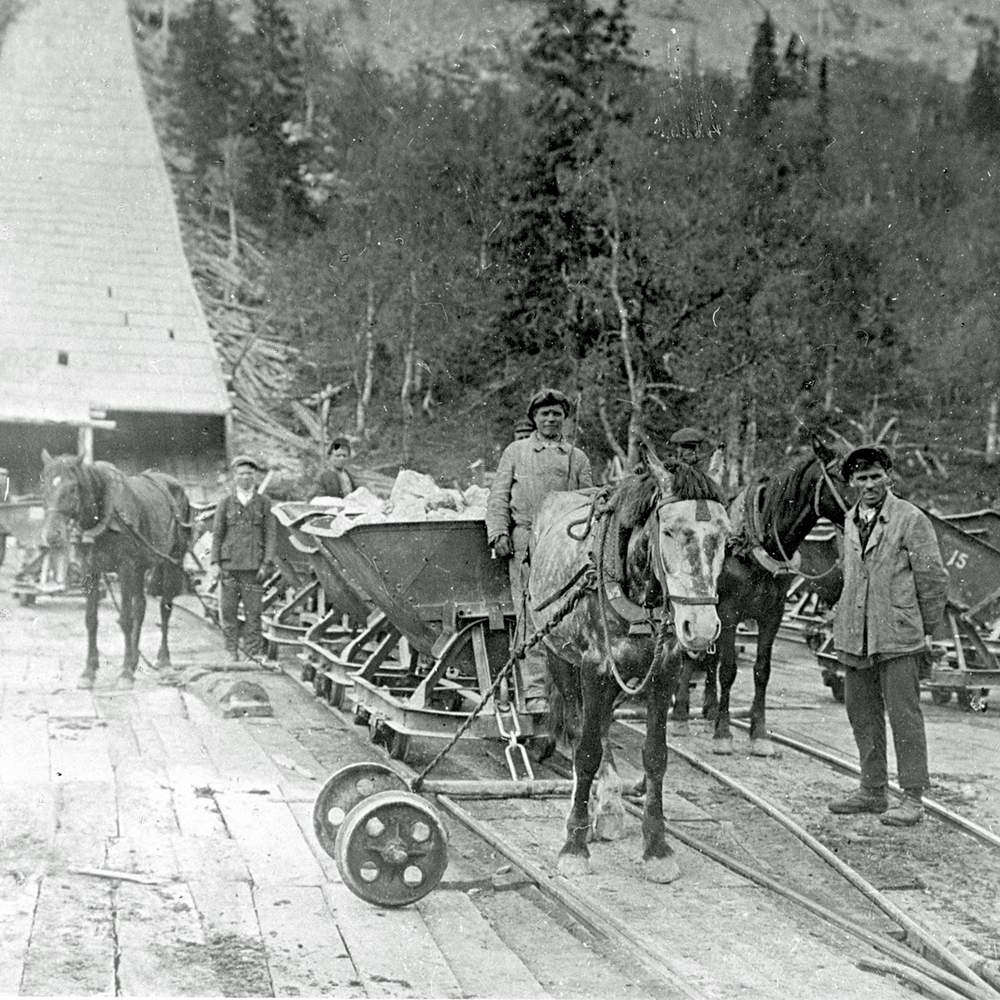
Horses transporting the ore in the 1930s
Soviet-era manually operated drilling equipment has been replaced by machines which can do the job much faster and more efficiently. Mining now is less about brute strength and more about learning how to operate complex machinery.
Safety is also a big priority. At the entrance to the lift shaft, a big sign exhorts miners to “Take Care! Remember who is waiting for you at home”.
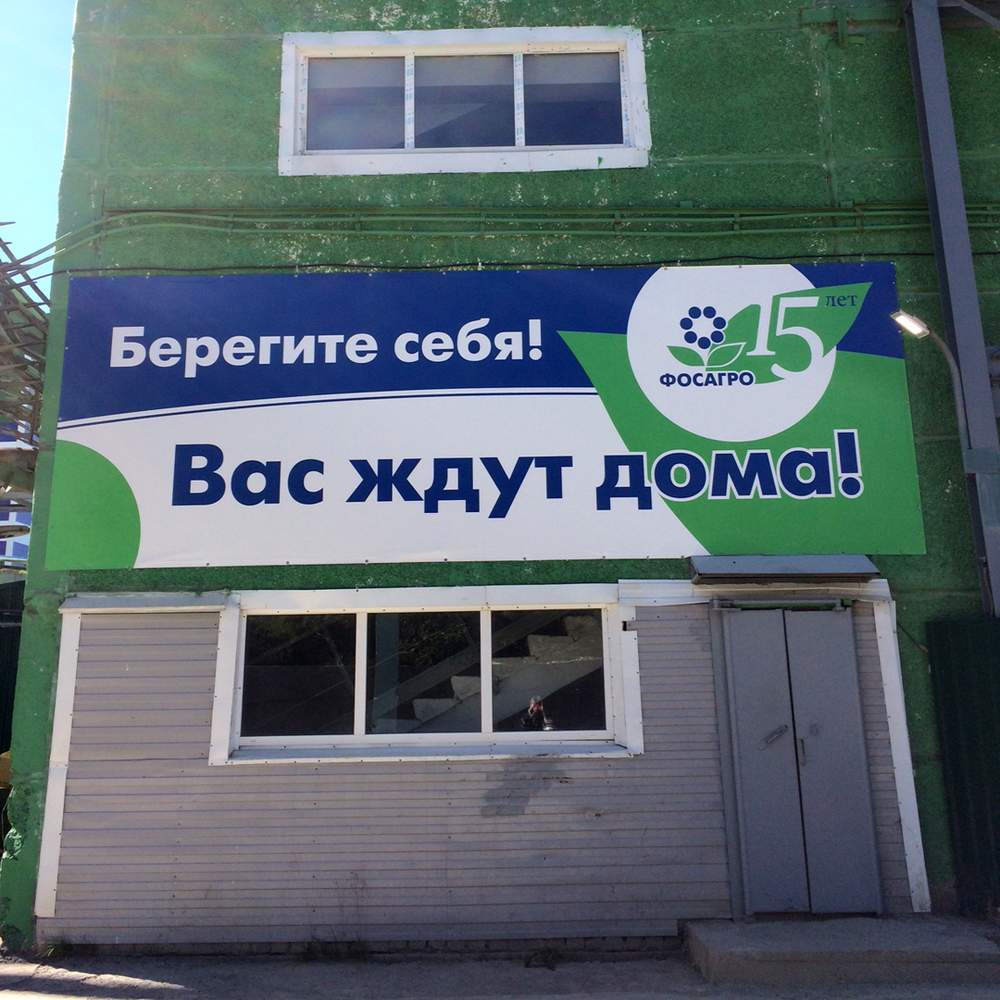
Sign at the entrance to the lift shaft
“Work underground is not for everyone,” says a caption in one of PhosAgro’s souvenir photo albums.
It’s hard to disagree.
These days a miner at the Kirovsk pit can expect to take home up to $1,700 (£1,300) per month. A very good salary by current Russian standards. But progress comes at a price.
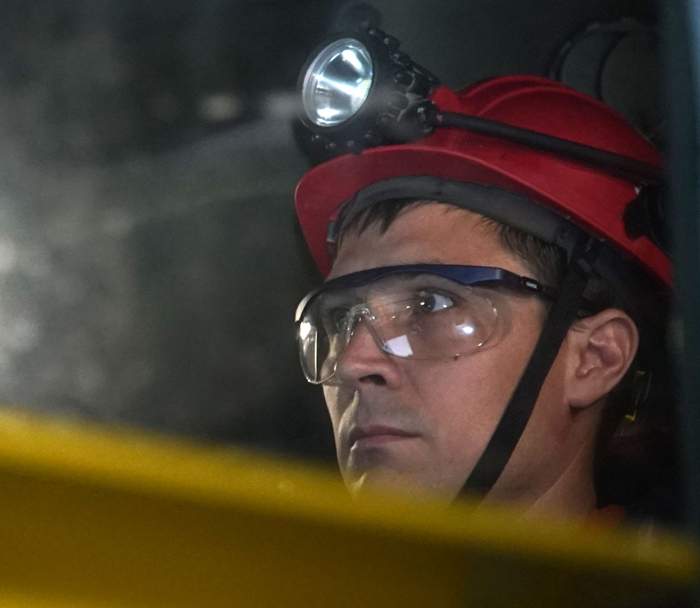
Over the past decade, Apatit has cut its core workforce from 10,000 to 5,000 people. Some staff have been laid off, others have been transferred to new privately-owned companies involved in essential areas like vehicle maintenance. Around 3,200 people work for PhosAgro subsidiaries running a range of facilities including the newly renovated company sanatorium and spa.
While some former Apatit workers have used their redundancy deals to invest in small businesses of their own, the plethora of small short-term loan companies in Kirovsk, suggests not everyone in the town has made a successful transition to the private sector.
At the Stalinist-era Palace of Culture preparations are in full swing for Miners Day. The Northern Fleet Choir is due to give a concert for local pensioners and tables are set up for a reception afterwards.
Pride of place in one corner is a little replica of a typical Soviet living room, complete with 1970s green armchairs, a carpet on the wall and a clunky white plastic telephone.
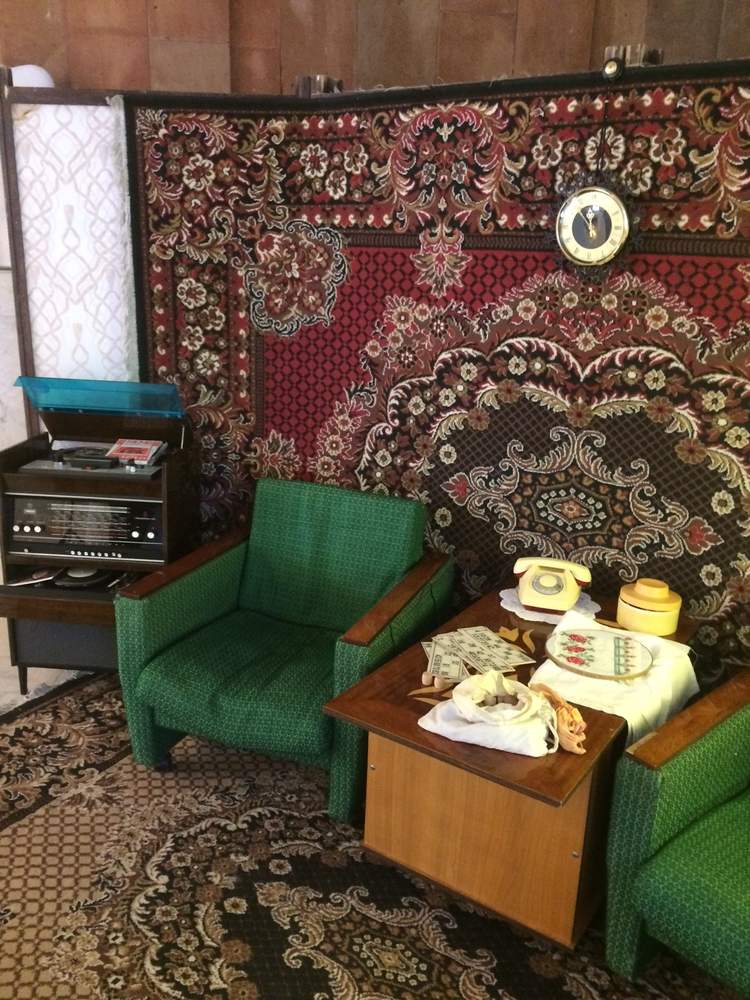
“It’s so people can take photos of themselves and remember the old days,” says the manager.
After the dark years of the 1990s, the town authorities are clearly doing their best to make their pensioners feel they are no longer forgotten.
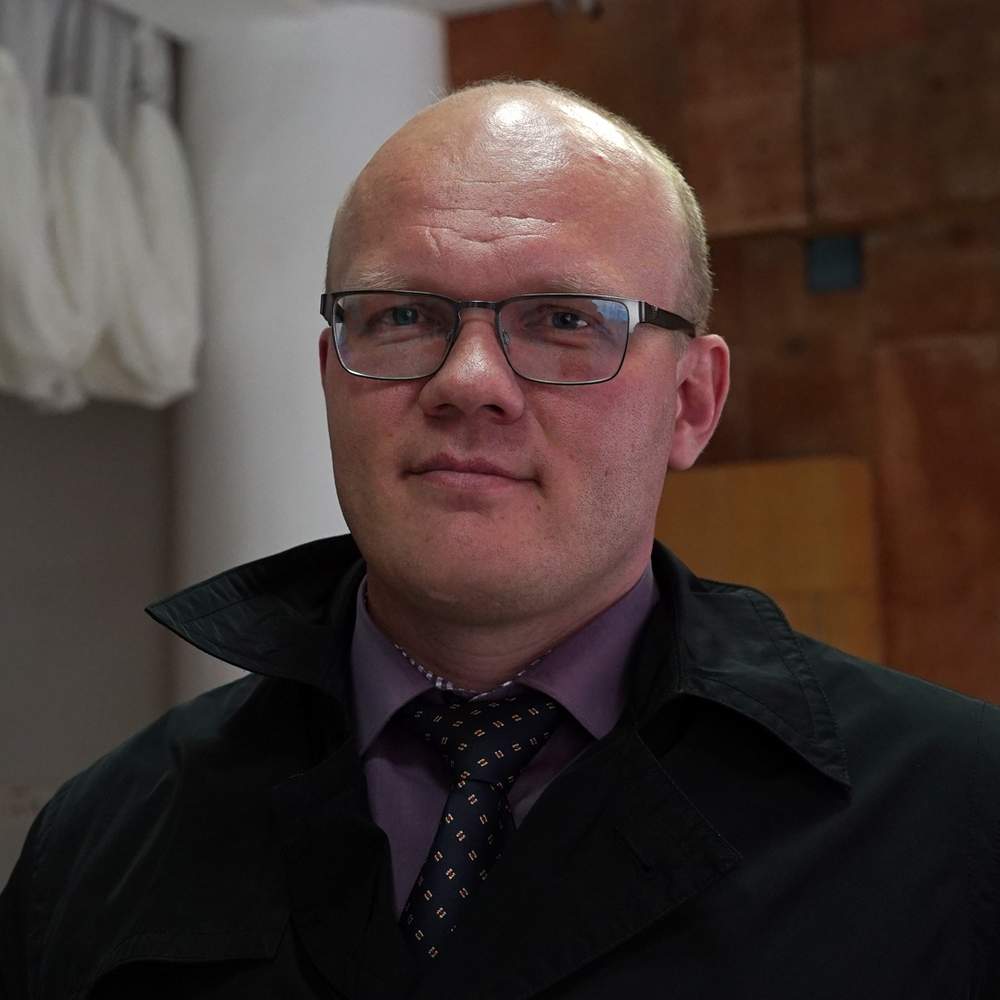
Vladimir Dyadik
But for Kirovsk mayor Vladimir Dyadik, who has popped by to check on the preparations, it’s not just the older generation he has to worry about.
Unfortunately many of our young people are leaving. It’s hard to keep them, and it’s also hard to attract well-qualified young workers to move here.”
In partnership with PhosAgro, Kirovsk has had some success running apprenticeships in the industrial sector. The next stage is to do more targeted training in areas like tourism and hotel management.
“There’s a great potential here, he says, “We just need to work hard to make it happen.”
One thing which might make Mayor Dyadik’s task a little easier, he says, is that because Kirovsk is officially classified as a monotown, the local authorities can offer new businesses tax breaks under a scheme which recognizes the town as a special development area.
Everyone in Kirovsk has high hopes pinned on tourism. The spectacular local landscape which has long attracted filmmakers is also ideal for hiking, fishing, and winter sports.

Aleksandr Gilgenberg
At the Big Wood Ski resort, Aleksandr Gilgenberg is surveying the view from the top of the slopes. As PhosAgro’s executive director in Kirovsk he’s the man with a finger on the pulse of the many projects the company is involved in. He seems genuinely enthusiastic about the changes now happening.
The ski-resort - owned and managed by PhosAgro – is a flagship project designed to turn Kirovsk into a new winter holiday destination. With guaranteed heavy snowfalls and a season lasting from November to May, Big Wood markets itself as a family resort where skiers and snowboarders can come for short breaks.
At the moment 60 percent of visitors come from St Petersburg, Moscow or nearby Norway, while the rest are from Murmansk region. If the comments on internet tourism sites are anything to go by, visitors seem to like the facilities and the prices on offer.
Many drive here, which explains why PhosAgro in partnership with the local authorities is investing in improving the local roads. Big investments have also gone into the nearby airport, which the company hopes to transform into a regional hub attracting tourists from further afield.
In the town centre there’s apres-ski fun on offer at a bowling alley and a karaoke bar, also owned by the company, but soon to be sold off. At the resort, they’ve installed state-of-the-art Swiss ski-lift technology and this year the lifts have also been operating at weekends in the summer.
I came last weekend. I was amazed how many local people were up here having barbecues and enjoying the outdoors.”
Alyona Danilova is very much an outdoor person. A botanist and keen racing cyclist, she’s lived in Kirovsk for most of her life and describes it as “quiet, cosy and very nice place to live”.
“When I’m away I miss the mountains,” she says. “I’m always so happy to see them when I come back home.”
But Alyona acknowledges life in the Far North is not for everyone.

“The Polar Nights aren’t easy,” she says. “In winter you don’t see the sun at all. You go to work in the morning, it’s dark. You come home, it’s dark. The weather is quite extreme – heavy snowstorms, strong winds, hail and heavy rain.”
Many, if not most, of Alyona’s former schoolmates have left in search of jobs in Moscow or St Petersburg.
They see Kirovsk as a place to come back to on holiday.
If we’re going to stop people leaving, we need more jobs.”
She’s right. The employment statistics in Kirovsk remain a cause for concern.
Around 35 percent of the workforce in the town are currently employed by PhosAgro. According to the Monotowns Development Programme, Kirovsk needs to create at least another 3,000 jobs outside the mining industry to revitalize the local economy.
Back in his flat on the fifth floor of a run-down 1960s building on the edge of Kirovsk, Aleksandr Bondarev is sipping tea as he looks through photographs of himself as a film extra.
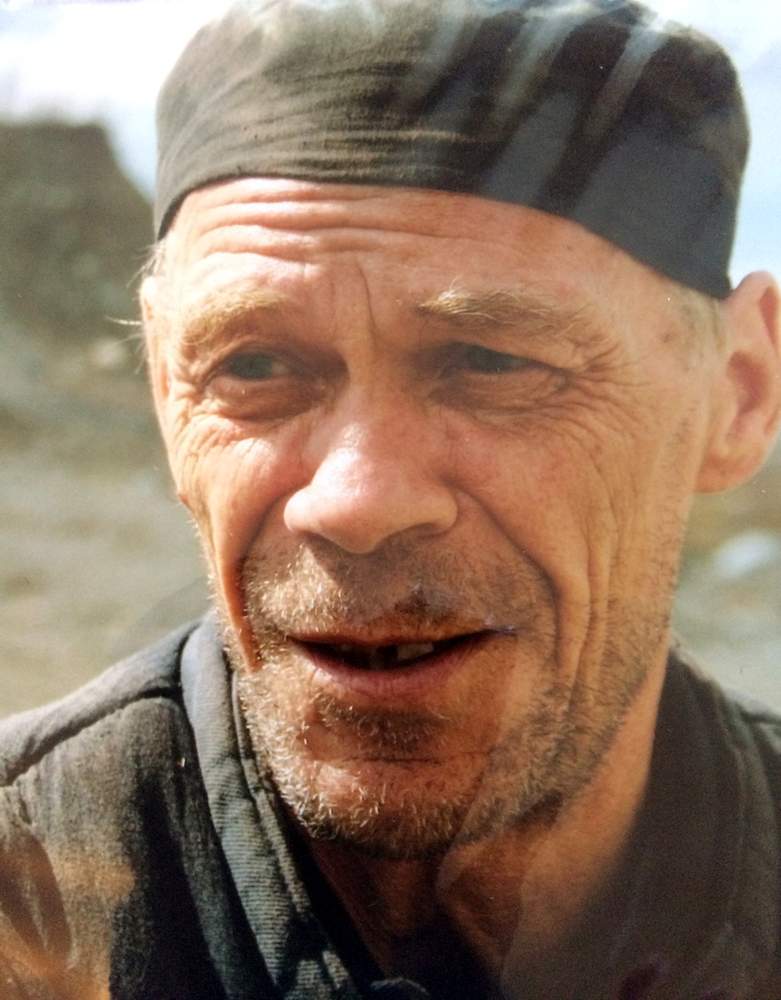
Aleksandr Bondarev in character, RGALI
The series he played a role in was called Lenin’s Testament. It told the life story of Varlam Shalamov, the writer and labour camp prisoner who once worked at the mine in Kadykchan in the Far East.
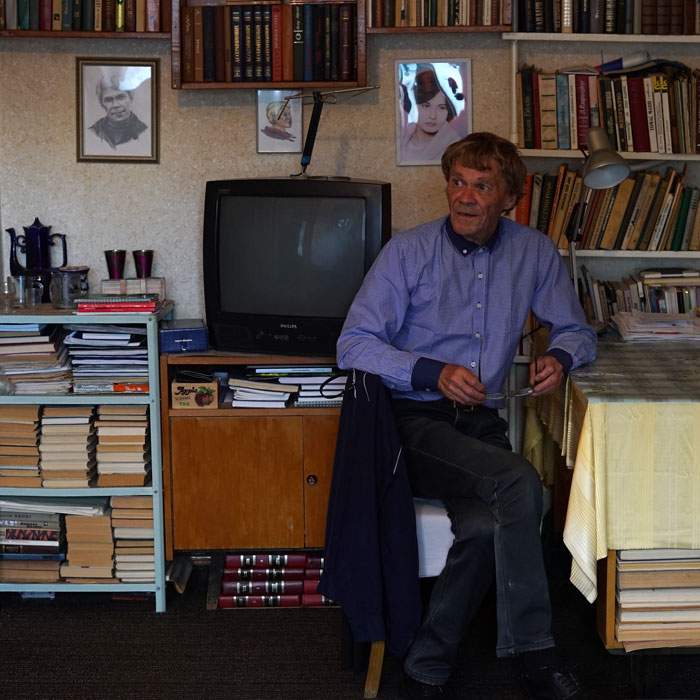
Aleksandr Bondarev today
Although Kirovsk and Kadykchan are at the opposite ends of Russia, their mountains and bitterly cold winters are similar enough for Russian TV to have recreated the grim world of a Kolyma labour camp right here on the edge of Kirovsk.
It’s tempting to see further parallels. Kadykchan with its sports hall, cinema and culture hall was an ideal Soviet monotown, and Kirovsk, whose same facilities have now been updated for the 21st Century, is still very much a monotown of the new Russia.
With apatite reserves expected to last for at least the next 80 years – that’s longer than the Soviet Union existed – most people in Kirovsk think the future is guaranteed.
With global-player PhosAgro at the helm and apparently committed to its social responsibilities as well as its business plan, the people of Kirovsk are also reassured someone has their interests at heart.
But a town which relies on one industry and one big company is always at risk of changes in both the market and the political climate.
Global markets are notorious for their fluctuations, and Russian business is notorious for its equally sudden changes of fortunes. There are many examples over the past two decades of Russian oligarchs who have lost everything and ended up in jail or exile.
It’s for this reason that despite all the efforts by both the company and the town to diversify the local economy, Kirovsk remains for now at least, on the Russian government’s list of most at-risk monotowns.
In Kadykchan, on the other side of Russia, winter is coming. Vladimir Voskresensky is smoking a cigarette and turning the pages of an old family album.
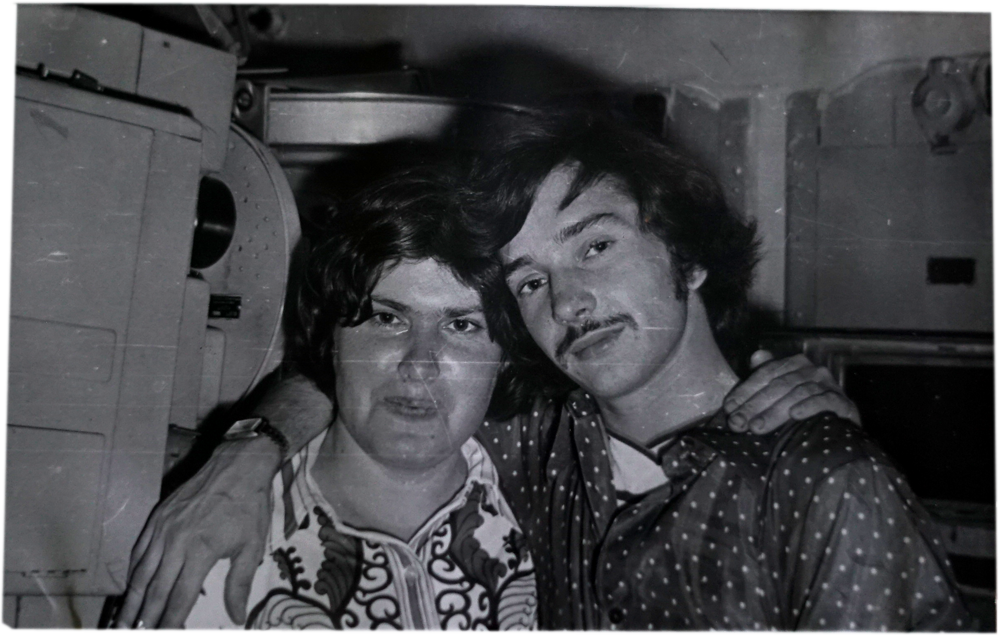
Fading black and white photographs chart the more than 50 years he, his parents and family spent building a life in Magadan region and helping keep the local mines and power plants running, only to see everything they worked for slowly crumble around them.
He comes to a picture of the Kadychan cinema in its 1970s heyday.
When you are happy you never really think about the future. It’s like being in love. You can’t possibly imagine breaking up. Happy people always think bad things will happen somewhere else.”
